Oregon

Can Grass Seed Tap into Carbon Markets?
Kotek Learns about Seed Production on Visit to Seed Farm
Soil Health Emerging as Priority for Many Seed Growers
Current Available Crop Insurance Programs for Grass Seed in Oregon
"Megasuit" Settlement Poses Threat to Seed Production
©2024 OREGON SEED COUNCIL
Seed
Winter 2024
A Publication of the
With Local Knowledge, We Can Grow Together
Your Eye in the Sky to Improve Vole Monitoring (VAM)
Wilbur-Ellis has partnered with AeroTract ® to bring you a new technology called Vole Activity Monitoring (VAM). By combining aerial imagery with an innovative software program, Wilbur-Ellis is able to provide a detailed map of vole infestation in the field, saving you time and money when it comes time to treat the problem.
• Early Detection of Vole Damage
• Reduce Labor Costs in Hand Applications
• Increase Bait Application Precision by Spreaders
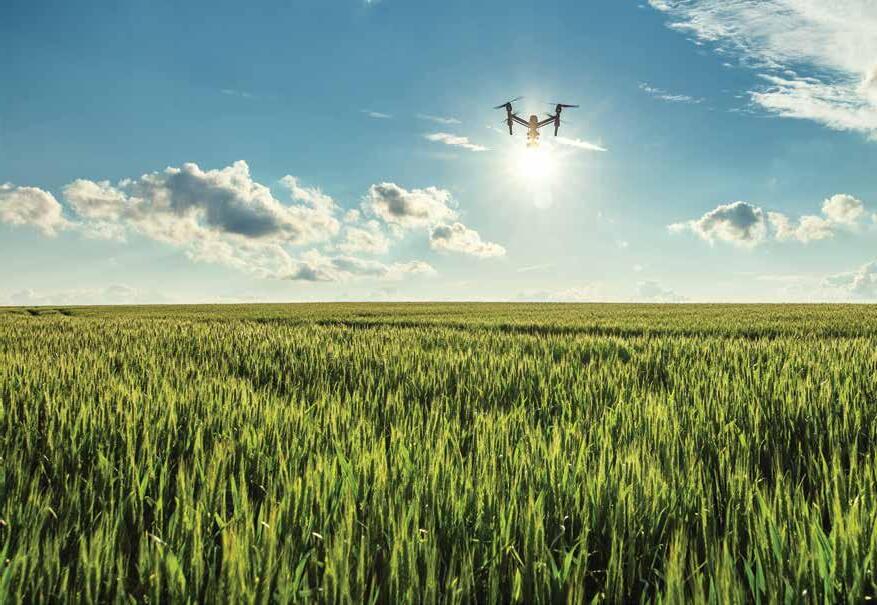


ALL INFORMATION CONTAINED HEREIN IS PROVIDED “AS-IS”, AND WILBUR-ELLIS COMPANY LLC (“WILBUR-ELLIS”) HEREBY EXPRESSLY DISCLAIMS ANY AND ALL REPRESENTATIONS AND WARRANTIES WITH RESPECT TO THE INFORMATION CONTAINED HEREIN, WHETHER EXPRESS OR IMPLIED BY LAW OR OTHERWISE, INCLUDING, WITHOUT LIMITATION ANY WARRANTY OF COMPLETENESS OR ACCURACY AND ANY WARRANTY OF FITNESS FOR A PARTICULAR USE OR WARRANTY OF MERCHANTABILITY. WILBUR-ELLIS SHALL NOT BE LIABLE FOR ANY DIRECT, INDIRECT, CONSEQUENTIAL, SPECIAL, OR INCIDENTAL DAMAGES ARISING OUT OF USE OF THE INFORMATION CONTAINED HEREIN OR ANY SERVICES PROVIDED BY WILBUR-ELLIS RELATED THERETO. For information only. Not a label. Prior to use, always read and follow the product label directions. WILBUR-ELLIS logo, and The Power of We are registered trademarks of Wilbur-Ellis Company LLC. AeroTract is a registered trademark of JH AeroTract LLC. K-260105 POWERED BY Contact your local Wilbur-Ellis representative to discover how you can harness The Power of We ® at bit.ly/WeVAM or at 541-926-1200 .




34 Chastain to Exit OSU, Ending 35-Year Run Extension Report ......................... 42 Seed Council Update ................... 45 Commissions Update .................. 47 Research & Regulatory Report............................................ 49 Classifieds ..................................... 52 Advertiser’s Index ........................ 52 Calendar ........................................ 52 6 Kotek Learns about Seed Production on Visit to Seed Farm OREGON SEED COUNCIL OFFICERS Executive Director Megan Chuinard megan@mac-consulting-llc.com 503-585-1157 • oregonseedcouncil.org Officers Kate Hartnell, President Alex Duerst, First Vice President Dave Goracke, Second Vice President Emily Woodcock, Treasurer Becky Berger, Immediate Past President Oregon Seed Post Office Box 3366 • Salem, Oregon 97302 Tel: (503) 364-3346 • Fax: (503) 581-6819 oregonseedcouncil.org /oregon-seed-magazine Publisher Bryan Ostlund Post Office Box 3366 • Salem, Oregon 97302 Tel: (503) 364-3346 • Fax: (503) 581-6819 Editor Mitch Lies Post Office Box 3366 • Salem, Oregon 97302 Tel: (503) 339-7898 • mitchlies@comcast.net Advertising Manager Shawn Anderson Tel: (503) 364-3346 • Fax: (503) 581-6819 shawn@ostlund.com 14 Improvements Forecast for Seed Markets 3 Can Grass Seed Tap into Carbon Markets? 10 Industry Lauds Selection of Charpilloz Hansen as ODA Director 12 OSA Changes Leadership, Expands Member Services 16 OSU Brings on Precision Ag Expert 18 "Megasuit" Settlement Poses Threat to Seed Production 22 Soil Health Emerging as Priority for Many Seed Growers FEATURES 28 Current Available Crop Insurance Programs for Grass Seed in Oregon 32 Former OSU Researcher Completes Ryegrass Genome WINTER 2024 1 A Publication of the Oregon Seed Council VOLUME FIFTEEN • NUMBER ONE • WINTER 2024 SECTIONS OregonSeed is published by the Oregon Seed Council in cooperation with Oregon’s grass seed commissions. Articles and columns cover the most current information on topics of importance to growers, the seed trade and others who value this industry. OregonSeed is published three times yearly, February 1, May 15 and October 1. Deadline for camera-ready art is four weeks prior to issue. EDITORIAL: Articles, announcements, photographs and drawings dealing with any aspect of the seed industry will be considered for publication. Editors and publishers are not responsible for views expressed in signed articles. All communications with or concerning articles, photos, etc. should be sent to OregonSeed, PO Box 3366, Salem, OR 97302. PERMISSION: Editorial material may not be reproduced or photocopied in any form without written permission of the OregonSeed publisher. SUBSCRIPTIONS: OregonSeed is circulated free to Oregon grass seed growers, members of the Oregon Seed Council, industry professionals and others who value the Oregon seed industry. OregonSeed is available, through subscription, to non-members. Email info@ostlund.com to request a substription. Cost is $25 annually, plus postage outside continental U.S.A. Back issues are available at $8.50 each. Publishers of OregonSeed assume no responsibility for accuracy and validity of claims in advertising or editorial reports. The opinions expressed by writers in by-lined articles are their own and not necessarily those of this magazine. Oregon Seed Winter 2024 36 Chastain, Bowers Honored at Seed League 39 Young Seed Farmers Take Home Insights from Denmark 41 Ron Burr, Who Helped the Industry Overcome Loss of Field Burning, Dies at 78
IT’S WHAT YOU DON’T SEE THAT COSTS YOU.
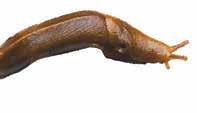

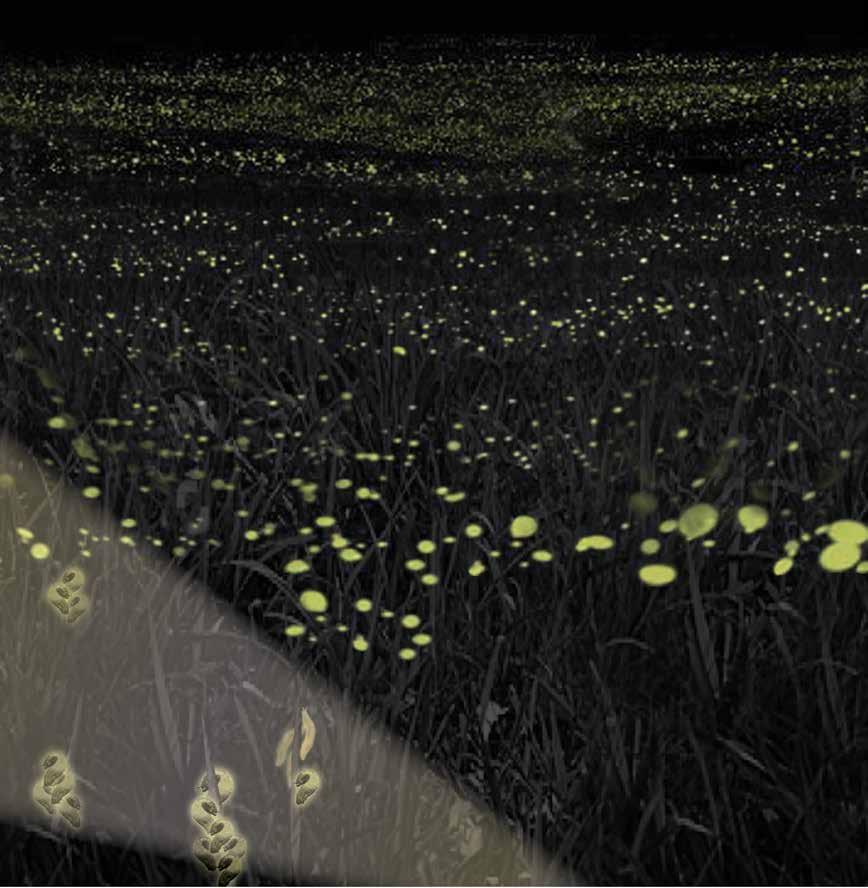
Spring brings an invasion of harvesting slugs that causes up to $100 million annually in damage to the grass seed market in the Willamette Valley.* Each night up to 30 slugs can cover each crown. Avoid sluggish grass seed yields with Deadline® M-Ps™ Mini-Pellets from AMVAC.
*Source: Oregon Seed Council
Contact Donnie Blades at 503-509-9776 or donnieb@amvac.com.
For more product information go to the Deadline M-Ps page at www.amvac.com.
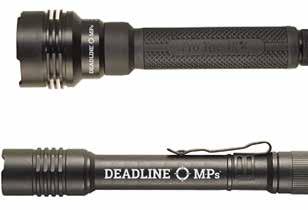
2 Oregon Seed
Always read and follow all label directions and use precautions. AMVAC and Deadline MP are trademarks owned by the AMVAC group. ©2023 AMVAC Chemical Corp. is a wholly owned subsidiary of American Vanguard Corp. All rights reserved.
AMVAC.com
Chris Lessey, a master’s student in the OSU College of Agricultural Sciences, takes greenhouse gas measurements in a Willamette Valley grass seed field. Researchers used data from this and other studies to show that grass seed fields store large volumes of soil carbon, well above the national average for croplands.

Can Grass Seed Tap into Carbon Markets?
Parallel to the Biden Administration’s push to enhance carbon markets in agriculture, research into the ability of grass seed crops to sequester carbon is showing the Oregon seed industry could be well positioned to partake in the markets. But there are some significant caveats.
The first big question is whether the industry can find a buyer, according to Debbie Reed, executive director of Ecosystem Services Market Consortium, a nonprofit market program that generates carbon insets for food companies from supply-chain operations.
Buyers could be in the form of companies or even governments looking for carbon offsets in a regulatory or voluntary framework, Reed said. Or they could be a seed company looking to generate carbon insets by capitalizing on the carbon friendly practices of one of its suppliers.
Then there are questions of whether seed growers will need to show what is known as “additionality,” or improvements over existing carbon sequestration levels. The additionality could come in several fashions, according to Reed, including by showing that if a seed farm wasn’t on that piece of land, it likely would be in a less carbon-friendly usage. Or a farmer may be able to show that each year of a stand more carbon is being sequestered based on a new management practice.
To date, Reed said she knows of no entity purchasing carbon offsets from a seed farm. There are some examples of pastures in livestock operations being awarded for carbon sequestration, but those credits are being calculated on a per-animal unit and not by the amount of carbon sequestered in the soil.
In the meantime, research by local scientists has shown that the perennial nature of Oregon grass seed production systems is ideal for soil health, including through reducing erosion, which helps protect water quality and benefits biodiversity, and through storing carbon.
In one project, which is funded in part by a Sustainable Agriculture Research and Education (SARE) grant, local scientists are working on
(continued on page 4)

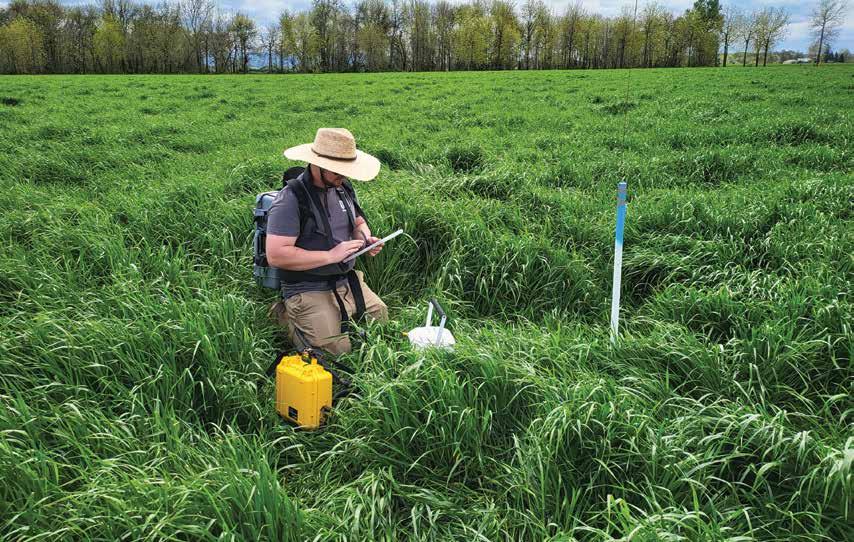
WINTER 2024 3
Photo courtesy Jennifer Moore
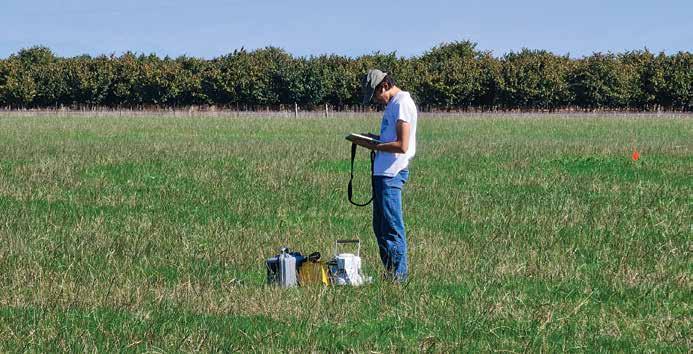

(continued from page 3)
developing a soil-carbon inventory for different Willamette Valley grass seed production systems and looking at opportunities to improve soil carbon sequestration in the different systems. And through use of historical data, including data from a recent tile-drainage and straw study by USDA Agricultural Research Service (ARS) and Oregon State University scientists, initial findings are showing that the production systems hold significant carbon stocks.
Speaking to an audience of seed growers at an OSU Extension Seed and Cereal Crop Production meeting in September, USDA-ARS soil scientist Jennifer Moore said that on average, Willamette Valley grass seed systems contain 35 tons of carbon per acre in the top foot of soil, which is well in excess of the national cropland average.
“To put that into perspective, the national cropland average is around 20 tons,” said Moore, who is leading the SARE-funded project along with fellow USDA-ARS scientist Kristin Trippe and OSU Extension agronomist Christy Tanner.
“You’re managing huge pools of carbon,” she told the growers.
The data shows significant variability of carbon stocks in the Valley’s seed production systems, Moore said, ranging from 28 to 50 tons per acre in the top foot of soil, a variability influenced in large part by production systems, including different straw management techniques, use of grazing and different tillage and crop rotation cycles. But in nearly all cases the stocks are considerable. And, she said, the first
goal for growers should be to maintain the existing carbon pools. Increasing them is a second goal.
Ultimately, Moore said, the researchers hope to compile their findings into a decision tool to help growers improve their soil carbon sequestration practices and help them measure carbon sequestration while maintaining crop productivity and quality.
“And then we’ll run modeling scenarios to try to give you some better information on what you can expect if you change your practices over time,” Moore told the growers.
General guidelines suggest that the more organic matter in soil, the more carbon that soil will contain, given that between 50 and 60 percent of soil organic matter is made up of carbon. And, Moore said, there are several known methods for increasing soil health and organic matter, including minimizing soil disturbance, maximizing soil cover, maximizing the presence of a continuous living root system and maximizing biodiversity, which can be achieved through crop diversity or by integrating livestock into crop rotations.
“By building organic matter, you build carbon, and that’s the foundation of the carbon trading markets,” Moore said.
Whether the industry can get to a point where it is awarded for its “huge pools of carbon” is a big question. But it appears that the Biden Administration is pushing toward more participation from farms and forests in carbon markets, a fact that could help. The USDA, for example, put out a press
Photo courtesy Jennifer Moore
Oregon State University student Marco Roberto takes greenhouse gas measurements in a Willamette Valley annual ryegrass field as part of a recent tile drainage study conducted by scientists from the USDA Agricultural Research Service and OSU.
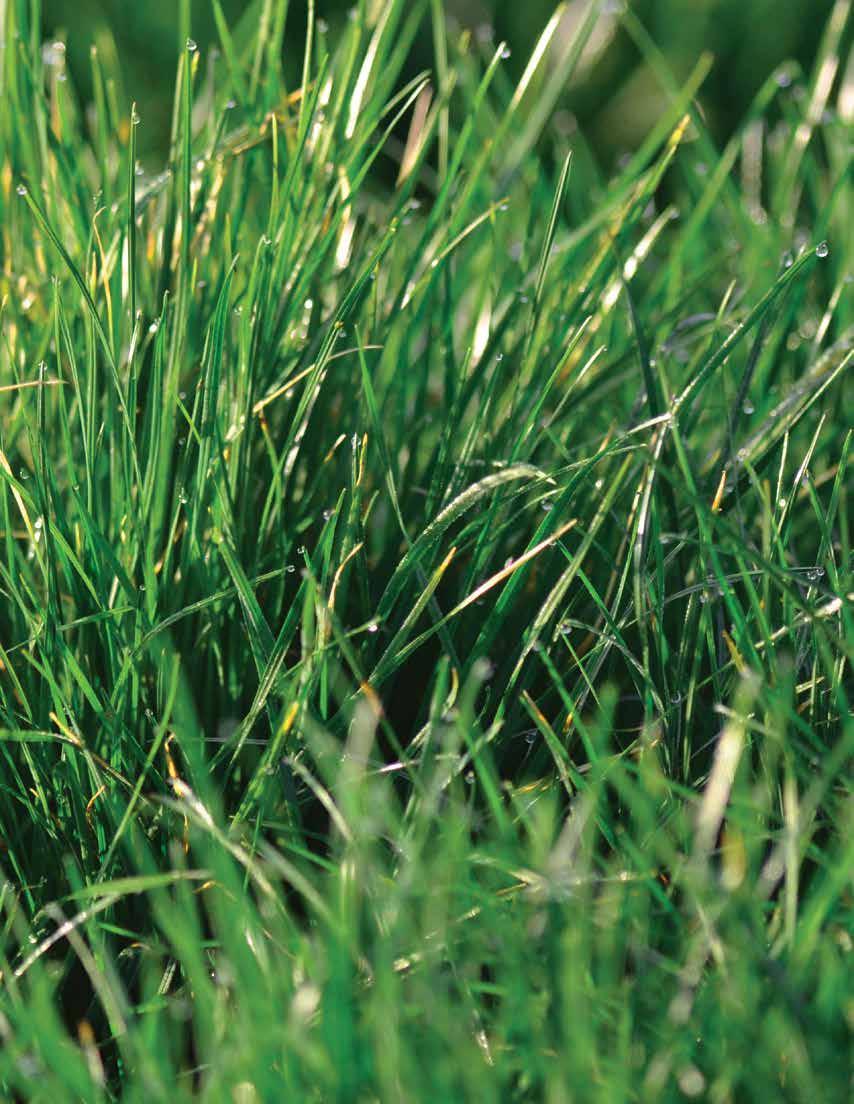
release on October 23 announcing the release of a comprehensive report on carbon market activity, a report that included looks at barriers to participation and opportunities to improve access to carbon markets for farmers and forest landowners.
“The Biden-Harris Administration is working aggressively to ensure that farmers, ranchers, forest landowners and tribal communities have opportunities to be part of the solution to climate change, all while cultivating new revenue streams and fostering investment in rural communities,” said Agriculture Secretary Tom Vilsack.
The carbon market activity report, titled “A General Assessment of the Role of Agriculture and Forestry in the U.S. Carbon Markets,” is the first of USDA’s deliverables under the Growing Climate Solutions Act, which was signed into law on December 29, 2022, as part of the Consolidated Appropriations Act of 2023, according to the press release.
In general, Ecosystem Services Market Consortium’s Reed said that carbon markets are based on two deliverables: private companies looking to purchase carbon credits as a means to voluntarily improve their carbon footprint, often for marketing purposes and to achieve voluntary commitments demanded by shareholders, stakeholders and customers; and government regulation, which drives investment in carbon sequestration through cap-and-trade and similar programs.
With few exceptions, such as in California, which has established a cap-and-trade regulatory system, today’s U.S. carbon inset markets for agriculture are almost exclusively populated by food companies operating
under voluntary programs, Reed said. They are turning to agriculture to meet internal goals to lower their carbon footprint in large part because a high percentage of the carbon footprint in food production comes from farming.
What opportunities exist for expanding those voluntary carbon programs to grass seed appears to be the next big question for Oregon seed producers. Reed’s advice? “Go find a buyer.” F

Pub/s: Oregon Seed Traffic: 1/5/24 Run Date: TBD Color: CMYK Author: TH Trim: 4.9375”w x 7.375”h Live: n/a Bleed: n/a Version: 1
With over a century financing agriculture, we know firsthand the challenges and rewards you face every day. Let’s work together to help you build your best future. Learn more at AgWestFC.com This institution is an equal opportunity provider and employer. AGWEST 17815-20 Cultivating_4.9375x7.375_Oregon Seed_v1.indd 1 1/2/24 10:09 AM
Cultivating your future.
WINTER 2024 5
Kotek Learns about Seed Production on Visit to Seed Farm

Seed farmer Denver Pugh was planting a field on his Shedd, Oregon, farm in late October when his phone buzzed with a Salem number he didn’t recognize. Pugh let the call go to voice mail and later listened to the message.
“I realized it was from the governor’s office, so I thought I should call back,” Pugh said.
Sure enough, it was the governor’s events coordinator asking if Governor Tina Kotek could visit Pugh’s seed farm.
In keeping with a campaign promise, Governor Kotek, it turns out, had visited nearly all of Oregon’s 36 counties, but had yet to visit Linn County. Because the county is known as the "Grass Seed Capital of the World," Kotek chose to visit a grass seed farm.
“It was stressed to me by her people that she doesn’t know anything about grass seed and farming and that she would love to learn,” Pugh said.
Where the governor’s office got Pugh’s number, he didn’t know, but Pugh viewed the request as an educational opportunity and agreed to the visit. “I’m not one to turn down an opportunity to educate and advocate for farming, and particularly grass seed farming, so I welcomed her with open arms,” he said.
The visit included a site inspection by the governor’s security team the day before the October 26 visit. Pugh was told he would have an hour with the governor.
Pugh, who has conducted several tours on his farm over the years, spread out his equipment the
day before Kotek was to arrive in preparation to walk the governor through the process of producing grass seed.
Pugh said he refrained from bringing up any controversial issues, preferring instead to concentrate on educating the governor and her staff.
“I figured I’m not going to start anything, that I’ll just try to teach her,” he said. But he did make a subtle reference to the state’s new ag overtime rule and high minimum wage.
“I told her that with the high minimum wage and now with the ag overtime that we have to pay that you would think it would be easy to find labor, but it’s not,” he said. “And I could tell that echoed with her.”
The cost and sophistication of the equipment needed to operate a seed farm also seemed to resonate with the governor, Pugh said.
“I had her sitting in a tractor that we plant with, with the planter still attached, and I have four different screens that control things in the tractor, and I was going over what screen does what and she stopped me and said, ‘I’ve got to ask. How much does this cost?’” Pugh said.
“And so, I told her the whole setup that you’re sitting in goes for around $700,000. And she was like ‘Wow,’ and I could tell it wasn’t a fake reaction,” Pugh said.
Another point that seemed to resonate with the governor and her staff was the partnership
6 Oregon Seed
Oregon Governor Tina Kotek at Pugh Seed Farm in Shedd, Oregon, hears about seed production from Denver Pugh.
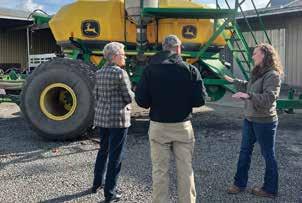

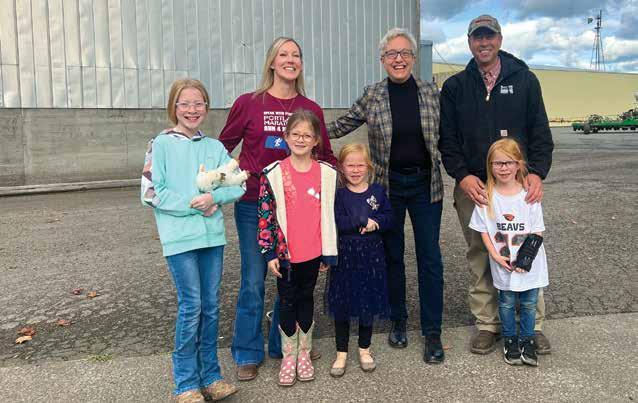
the industry has with Oregon State University and specifically with OSU Seed Services. While touring the farm’s clean-seed storage facility and explaining the role OSU Seed Services plays in certifying seed quality, Pugh said the governor stopped him.
“She said, ‘Are you talking about Oregon State University? Does the university do all this?’ And I’m like, ‘Yes, the OSU Seed Certification program is world renowned,’” Pugh said. “And she said, ‘I didn’t realize that.’ And she looked at her staff and asked, ‘Did you know that?’ And they were shaking their heads.
“So, it was interesting to let her know how closely we work with OSU,” Pugh said.
Kotek also asked why Linn County is so well known for grass seed farming and Pugh filled her in on some of the advantages enjoyed by Willamette Valley farmers, including the fact that growers here can let the seed dry in the field.
“I told her that it’s less costly, that we don’t have to put it in dryers, that we can let Mother Nature dry the crop down,” Pugh said. “And I told her that we’ve been doing this a long time and we’re good at it and that the main reason we are number one is because of the quality we produce. I told her that there are a lot of other places that have figured out how to grow grass seed, probably more now than at any other time. So, what we have over everybody else is our quality.”
Pugh said he also explained that he doesn’t consider himself just a grass seed farmer anymore.
“I told her I’m shying away from saying I’m a grass seed farmer anymore because there are so many other crops out here,” Pugh said. “Now I am a seed farmer, is what I told her. And I explained cover crops to her and told her about all the different cover crops we grow and about how we are producing seed for the cover crop industry across the United States. And it seemed like that was a bit of an eye opener for her.”
Overall, Pugh said Kotek was engaged, asked pertinent questions and seemed to genuinely enjoy learning about seed farming.
“When she first got here, she came charging out of the SUV, came right over to me and shook my hand, said it was amazing to be out here, and just went right in and started asking questions,” Pugh said.
The governor also invited Representative Jami Cate, R-Lebanon, who comes from a seed farming background, to participate in the tour and Pugh said she had good contributions.
“It worked really well having her there,” Pugh said.
Reflecting back, Pugh said there were other things he wished he would have brought up. But he recognizes that he only had an hour and believes he did what he could.
He added, “I think she had to learn something by being out here. And just the fact that she reached out I think is important.” F
WINTER 2024 7
Top Left: From left, Governor Kotek visits with Pugh and Rep. Jami Cate, R-Lebanon, on a visit to Pugh Seed Farm. Bottom Left: Kotek at the seed-cleaning warehouse on Pugh Seed Farm. Right: Back row, from left, Shay, Spears Pugh, Kotek and Denver Pugh, pose with Denver and Shay's daughters, Kora, Lily, Paula and Holly at Pugh Seed Farm.

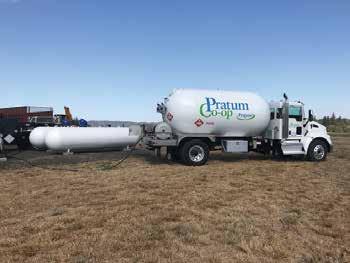

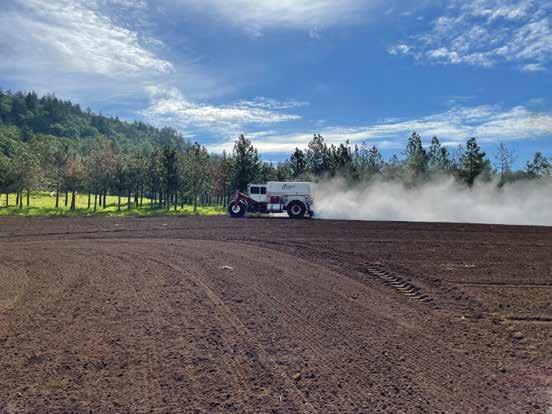
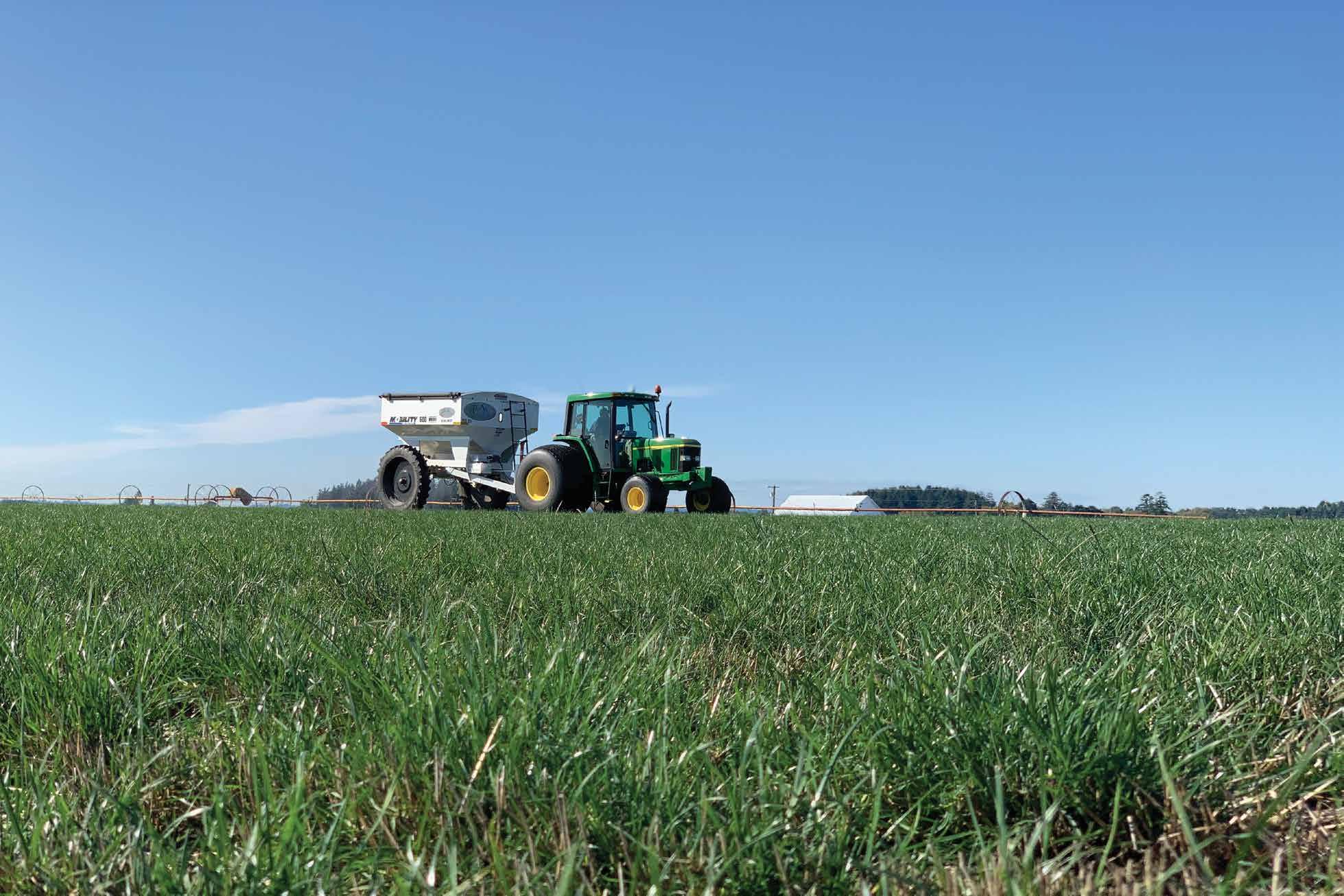

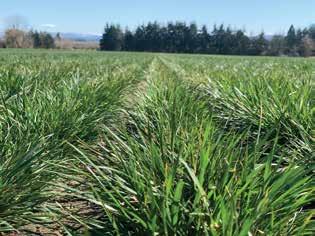
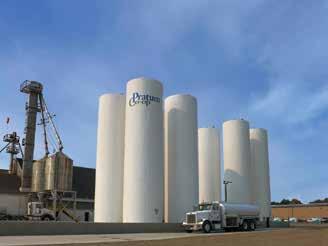


Industry Lauds Selection of Charpilloz Hanson as ODA Director
Oregon farm industry executives lauded Governor Tina Kotek’s decision to appoint veteran agriculture official Lisa Charpilloz Hanson to serve as the next director of the Oregon Department of Agriculture (ODA).
“It’s great to see someone with such a history of experience with the agency and an understanding of the issues that are particular to Oregon,” said Katie Murray, executive director of Oregonians for Food and Shelter (OFS). “I think people are feeling pretty positive about this.”
“From my vantage point in agriculture, Lisa’s appointment as ODA director is entirely welcome,” said seed commissions administrator Bryan Ostlund. “She has such a bank of knowledge about who we are as an industry and the challenges we face. Even at times when we may not entirely agree on an issue, there’s never a doubt that Lisa cares greatly about farm producers and our allied industries.
“It should also be recognized that Governor Kotek also saw the talent and experience that Lisa represents,” Ostlund added. “That certainly deserves a thank you for the Governor to put such a qualified person in the Director’s Office.”
Charpilloz Hanson is a familiar figure in Oregon agriculture from her more than 15 years as deputy director at the ODA, and before that several management positions within the department. The department first hired her as Commodity Commission Program manager more than 25 years ago.
“Lisa Charpilloz Hanson brings decades of experience working with natural resource communities to meet the needs of Oregonians across the state,” Kotek said in announcing the appointment on October 11. “I look forward to seeing her great work and leadership at the agency.”
Charpilloz Hanson started as interim director on December 1 and was still awaiting Oregon Senate confirmation as of press deadline. She most recently served as director of the Oregon Watershed Enhancement Board, a position she held from 2021 until she started back at ODA. She also served as interim director of the ODA in 2016 during the

transition from Katy Coba, who led the agency from 2003 to 2016, to Alexis Taylor, who led the agency from January 2017 to 2022, when she left to serve as U.S. Department of Agriculture undersecretary for trade and foreign affairs.
The state agency has been without a permanent director since Taylor’s departure.
Charpilloz Hanson grew up on a farm in Marion County and holds a bachelor’s degree in agriculture and resource economics from Oregon State University. A past director of the American Hampshire Sheep Association, she currently lives on a farm in Clackamas County and raises awardwinning Hampshire and Southdown sheep.
Among her professional achievements, Charpilloz Hanson has been awarded the James Graham Outstanding Service to Agriculture Award from the National Association of State Departments of Agriculture, the Oregon Farm Bureau’s Service to Agriculture Award and the USDA Group Honor Award of Excellence for her work on national practices.
10 Oregon Seed
Lisa Charpilloz Hanson
“It is an incredible honor for me to lead and serve this great agency,” Charpilloz Hanson said. “Over the next decade, Oregon agriculture will become even more diverse, and our challenges with water and climate will only get more complicated.
“I am committed to building bridges with partners to help find solutions that will serve our industry and environment today and into the future,” Charpilloz Hanson added. “I look forward to working with talented staff and innovative community partners to positively impact an industry that I love and that touches every Oregonian.”
Charpilloz Hanson’s understanding of issues facing Oregon agriculture and her familiarity with the key players in state government and private industry are expected to be an asset, agriculture executives said.
“She knows the agricultural industry, knows the agency and just as important, knows Oregon,” said Greg Addington, executive director of the Oregon Farm Bureau.
“She’s definitely someone who has a deep understanding of all of the issues that we see and someone who is able to step in and work on issues without having to figure out who’s who and what’s





what,” said OFS’s Murray. “She is an advocate for agriculture, which is what we really hope to see in that role.
“We look forward to working with her,” Murray said.
“Director Charpilloz Hanson has a strong background and positive relationship with the seed industry,” said Megan Chuinard, executive director of Oregon Seed Council.
“We know she’ll be a great partner.”
It should also be recognized that Governor Kotek also saw the talent and experience that Lisa represents. That certainly deserves a thank you for the Governor to put such a qualified person in the Director’s Office.”
“Lisa is the perfect selection for the director,” said Katie Fast, executive director of Government Relations for Oregon State University, who has worked with Charpilloz Hanson often, both during Fast’s time with the Oregon Farm Bureau and Oregonians for Food and Shelter and in her current position. “Through her background and experience, she understands Oregon agriculture and the unique role of the agency.” F



Ryan Tribbett Executive Director & Government Affairs Whitley Sullivan Government Affairs Coordinator & Oregon Seed Council Rep George Plaven Communication & Marketing Coordinator Karen Withers Technical Director & Committee Support Introducing Your Team at Oregon Seed Association info@oregonseed.org www.oregonseed.org Phil Scheuers Assistant to the Board and Director & Government Affairs Josie Hankins Event Planning Coordinator & Member Support
Bryan Ostlund
OSA Changes Leadership, Expands Member Services
The Oregon Seed Association (OSA) has announced plans to develop a team-based leadership approach under a new executive director as it positions itself to better meet the evolving needs of its members.
In a late-November update on its website, the association announced that Ryan Tribbett was taking over as executive director, replacing Amanda Spoo, who served in the position from July 1 to November 30.
Having served the OSA as a lobbyist, Tribbett brings a working knowledge of the organization into his position and has been instrumental in guiding the association into the new leadership format, said OSA President Lucas Solis.
“Ryan is a really good communicator and he made the transition to the new leadership almost seamless,” Lucas said.
Lucas added that the association moved its administrative leadership from PAC/West Communications to PAC/West Lobby Group because of the expanded services available in the PAC/ West Lobby Group, which recently began offering association administrative services.
“With the new group we have an executive director, a legal arm, a marketing arm, a legislative arm,” Solis said. “There are a lot of different very talented people making up this team. And our goal for the past few years was to create a team approach.”
As part of the November update, OSA announced that Phil Scheuers will serve as assistant to the board and the director; Whitley Sullivan will serve in government affairs and lobbying; Josie Hankins will serve as event planning coordinator with responsibilities for member support; George Plaven, a former reporter for the Capital Press, has been brought on to serve the organization’s communications and marketing needs; and Karen Withers of AgCultured Consulting is serving as technical director and overseeing the association’s committees, which are being reshaped to minimize overlap and improve efficiencies.
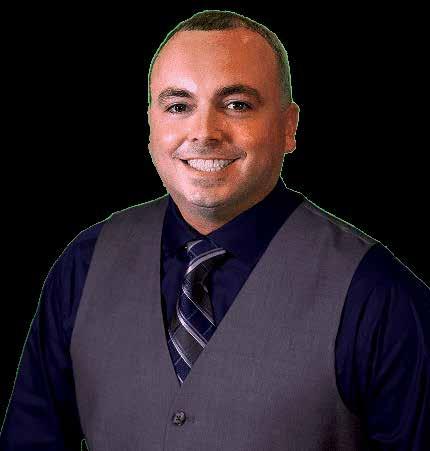
The team-based approach is expected to better meet the needs of its members by bringing more voices into the decision-making process to help ensure that all its members are being served in the best manner possible.
The organization, Solis pointed out, includes a diverse membership of national and international seed companies, as well as seed analysts, seed cleaners and some growers. Meeting all of their needs at times can be challenging, he said.
And, he said, the organization’s charter to represent the Oregon seed industry in national and international organizations can be challenging as well, given that the industry is competing for influence on policy issues with large commodity groups like corn and soybean grower associations.
Among key issues looming for the ODA is an attempt to persuade governmental officials to update seed labeling law in a way that will allow for electronic labeling and an effort to create a database of seed regulatory requirements for all 50 states. F
12 Oregon Seed
Ryan Tribbett

Year-round performance no matter the weather
There are few guarantees in farming, but Ferroxx® Slug and Snail Bait and Ferroxx®AQ Slug and Snail Bait are exceptions. This family of iron baits performs through all seasons, no matter the weather.
This is good because slugs lay eggs year-round. They’re super busy from early fall to spring. Plus, they can even keep it up through early summer. These eggs hatch into juvenile slugs that become your problem next year.
Not anymore. Ferroxx iron baits are efficacious against adult and juvenile slugs. Baiting appropriately through next spring can break the slugs’ life cycle. This stops them from becoming destructive pests next fall. For extremely wet conditions, such as standing water, use Ferroxx AQ, our AQuatic bait!
Proven performance and value.
WINTER 2024 13 Neudorff North America 250-360-6021 • Neudorff Pro.com
© 2023 Neudorff North America, all rights reserved.
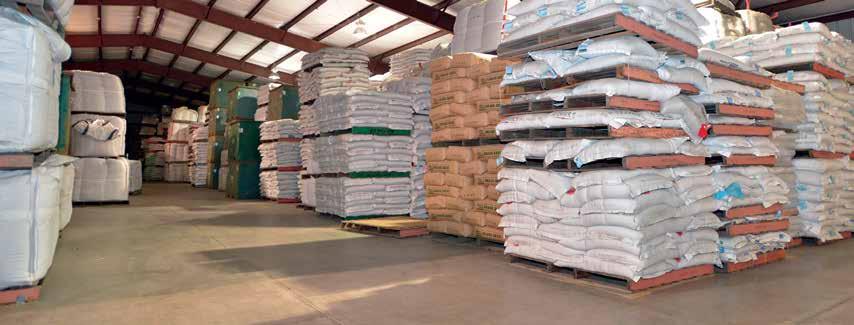
Improvements Forecast for Seed Markets
Aseed company executive sees a light at the end of the tunnel for Oregon seed prices, but it may not come for a year or more.
Speaking at the Oregon Seed League’s Annual Meeting in December, Aaron Kuenzi, Seed Division manager of Pratum Co-op, said a decline in harvestable acres of tall fescue and perennial ryegrass is combining with a reduction in inventory at the distribution level to spur his optimism that seed prices will increase by spring 2025 and by fall 2025 at the latest for some species.
“The last couple of years, we’ve been going into winter with our distributors holding plenty of inventory,” Kuenzi said. “That is not the case this year. So, thankfully, if we can get some good weather, we could see some decent demand this spring and actually have some good sales.”
In his presentation, Kuenzi showed that harvestable acres are down by as much as a third from two years ago, as companies have scaled back on contracts. “That is significant and will help us get through this excess (at the production level),” Kuenzi said.
“I know that is tough for farmers in some cases,” he added. “Unfortunately, it is necessary to get us back into supply and demand equilibrium and into a better balance in our markets.”
There also are reports of a sizable number of acres being plowed out in the Willamette Valley, much more so than in a typical year.
“With the dry weather that we had, there were just a lot more acres coming out than normal,” said Mike Baker of NORAM Seed Consultants LLC. “I can’t tell you how many were plowed out, but I drive the Valley four days a week at least and I have seen a lot of acres coming out and I do think it was significant.”
Becky Berger of Berger Seed Company in Carlton said that she too knows of “just a lot of acres coming
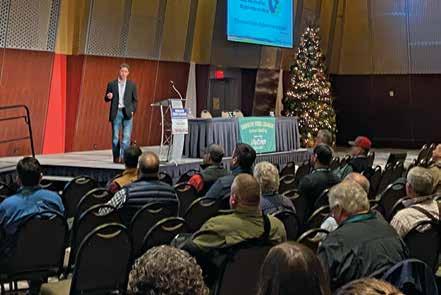
out.” Most of them have expired out of contract, she said, but not all.
“I’ve been told by a company and I know some other people have also been told to plow out acres still under contract,” she said.
On another front, the industry had hoped for strong sales this past fall to help alleviate storage at the production level, but other than some late fall movement, that apparently didn’t happen. Kuenzi characterized the 2023 fall market as “below average consumption.”
Baker agreed that fall movement wasn’t strong but said late rains in the southeast helped improve sales in late October and early November. “The late rains certainly helped the sales of tall fescue and annual ryegrass in the southeast,” Baker said. “And
14 Oregon Seed
Aaron Kuenzi of Pratum Co-op’s Seed Division at Oregon Seed League in December said to look for seed prices to increase sometime next year.

So, thankfully, if we can get some good weather, we could see some decent demand this spring and actually have some good sales.”
Aaron Kuenzi
sales of perennial ryegrass for the turf market, particularly golf and athletic field markets, had some decent movement late in the year.”
Among several unknowns for the industry going forward is the future state of the economy, a topic addressed at the December Seed League meeting by the featured speaker, nationally recognized economist Ed Seifried. Seifried pointed out that there are several incongruent forces at play in the economy, some of which, such as an inverted yield curve, where long-term interest rates are less than shortterm interest rates, suggest a recession is inevitable and some of which, such as the strong jobs market and high gross domestic product, indicate the country may be able to avoid a recession or at least shorten it.
Seifried also pointed out that while housing starts are down, housing permits are up as builders are preparing to get to work when interest rates are lowered and housing demand increases.
“The future right now is a little uncertain,” Kuenzi said. “We may see a little bit of turbulence in our industry, but it will cycle and it will change.” F
Sameas: SelectMax®
Sameas: Callisto®& Explorer®
Sameas: Gramoxone®
PGR’s
WINTER 2024 15 Matt Heinze VP Sales & Marketing matth@axill-solutions.net 559-936-0444 MOBILE www.Axill-Solutions.net Save $$ On Your Ag Chemicals # Restricted use product. All product names, logos, brand names, or trademarks are property of their respective owners. All company, product and service names used in this material are for identification purposes only. Use of these names, logos, brands and trademarks does not imply endorsement. Products may not be registered for purchase in all states. Please check with your Axill Solutions Sales Manager. Product Name Pack Size Active Ingredient % Active HERBICIDES Clethodim 2EC 2x2.5 gal. Clethodim 26.40% 265 gal. Clethodim 26.40% Mesotrione 4SC 2x2.5 gal Mesotrione 40% Paraquat 3SL* 265 gal. Paraquat 43.20% FUNGICIDES Azoxy 2SC 2x2.5 gal. Azoxystrobin 22.90% 265 gal. Azoxystrobin 22.90% AzoxyProp SE 2x2.5 gal. Azoxy/Propicon 13.5%/11.7% 265 gal. Azoxy/Propicon 13.5%/11.7% Propicon EC 2x2.5 gal. Propiconazole 40.3%
Pro Hex 27.5% WDG 4x5 lbs. Prohexadione Ca 27.50%
Sameas: Quadris®
Sameas: QuiltXcel®
Sameas: Tilt®
Sameas: APOGEE/KUDOS®
Oregon based and family owned!
OSU Brings on Precision Ag Expert
As Jing Zhou immersed himself in the study of agricultural engineering as an undergraduate in China, he began seeing the potential to use advanced technology for solving complicated agricultural production issues.
And he’s never looked back.
“I started feeling that oh, if we can solve this problem, it is going to be very impactful for growers and society as a whole,” he said. “And so, I just keep working on it.”
Zhou, who started at Oregon State University (OSU) in October, is leading the Crop and Science Department’s new precision agriculture research and teaching efforts. He comes to OSU from the University of Wisconsin-Madison, where he worked as a postdoctoral research associate in the Digital Agriculture Lab of the Department of Biological Systems Engineering. Prior to that he achieved a bachelor’s degree in Agricultural Mechanization and Automation and a master’s degree in Agricultural Engineering, both from Nanjing Agricultural University in Nanjing, China. And he holds a Ph.D. in Biological and Agricultural Engineering from the University of Missouri-Columbia, where he worked on the use of remote sensing and artificial intelligence in agriculture.
It was while in China that Zhou began applying his engineering expertise to agricultural issues. “And then when I came to the U.S., I realize we are using a lot of new methods to solve challenging issues,” he said. At the University of Missouri he developed drone-based phenotyping technologies to predict production and maturity time for soybean. And at the University of Wisconsin he used spaceborne imagery and advanced artificial intelligence models to estimate alfalfa biomass and quality in real time.
At OSU Zhou said he is looking forward to working in grass seed and other specialty crops produced in Oregon. “I am very appreciative of the opportunity to help bring precision agriculture here and work on production problems affecting the growers here,” he said.
Zhou, who describes himself as a multidisciplinarian, said he is particularly looking forward to working with specialists within the Crop and Soil Science Department. Already, he said, he has teamed up with weed scientist Pete Berry, who is leading a
project involving the use of remote sensing and artificial intelligence algorithms to identify weed species in mint production fields. The two also have discussed projects involving the utilization of cutting-edge tools to further isolate weeds in production fields for the purpose of utilizing spot spraying technology, a project that could help growers isolate specific weeds that can be targeted with additional herbicides. The approach, he said, could improve weed control, help reduce herbicide applications and by reducing the amount of material applied, help protect the environment.
 Jing Zhou
Jing Zhou
Zhou also is looking into utilizing satellite data to better inform the grass seed industry on the production acreage of different grass seed species, a project that could help in pricing seed. “The thought is that if we can classify what grass species are planted in what area and how large the area is, and we combine that information before the seed crop is even harvested, it could help the industry be better informed when discussing prices,” he said.
Nicole Anderson, Extension seed crop production specialist, said Crop and Soil Science Department scientists are thrilled to have Zhou on board.
“The really good thing about Jing is that his training is in biological engineering and agricultural engineering and he is particularly good at using remote sensing and other artificial intelligence type technologies,” Anderson said. “And he brings a skill set in computer programming, statistical programming and spatial analysis that most crop scientists don’t have.
“I think this is a step into the future, and I think we and the industry should feel very fortunate that we have somebody of this caliber working on seed crops,” Anderson said. F
16 Oregon Seed












WE HEAR T YOU

It takes a farmer to understand a farmer. And here at Liphatech Ag, we have the farming and ranching backgrounds to know what you’re up against every day. Your dedication, grit and selflessness don’t go unnoticed. Our team is here to support you in every way we can.
WE HAVE YOUR BACKS, BARNS AND BOTTOM LINES.







LIPHATECH.COM • 800.351.1476
"Megasuit" Settlement Poses Threat to Seed Production
The Oregon Seed Council is among agricultural organizations urging the U.S. Environmental Protection Agency (EPA) to scale back proposals on pesticide use restrictions as it fulfills terms of a court settlement from a lawsuit charging the agency with violating the Endangered Species Act.
Of immediate concern for the agriculture organizations is an EPA workplan developed in 2022 that was approved by a District Court judge in San Francisco last September. The workplan includes proposals that threaten a farm’s ability to produce crops in any sort of sustainable manner, and Willamette Valley seed farms appear particularly hard hit.
The proposals are part of a settlement to a 2011 suit brought by the Center for Biological Diversity that accused the EPA of violating the Endangered Species Act when it registered or reevaluated pesticides. The lawsuit, called the “megasuit,” initially targeted 382 pesticide active ingredients, a number that was later reduced to 35 active ingredients covering more than 1,000 pesticide products.
In the settlement, the EPA proposed taking a multispecies, multichemical approach to meet its Endangered Species Act obligations when registering pesticides rather than reviewing each pesticide separately under the Federal Insecticide, Fungicide and Rodenticide Act.
Pilot Project
The agency’s initial proposal includes the establishment of a Vulnerable Species Pilot Project that as of press time included an essential ban on pesticide use on nearly one million acres in the Willamette Valley. The proposal is part of a plan to protect the Taylor’s checkerspot butterfly, one of 27 protected species nationwide for which the EPA is addressing in the Pilot.
The Oregon Seed Council and other agricultural organizations have aired concerns that the proposed remediations represent a dramatic overreach given that the butterfly’s known area of habitat in Oregon is less than 20
acres in Benton County, a sliver of the nearly one million acres the EPA has proposed for its pesticide exclusion zone.
“We want to make sure that our growers aren’t negatively impacted by this and other regulatory actions,” said Megan Chuinard, executive director of the Oregon Seed Council. “So, we are working with partners in the agriculture community and elected officials to educate and elevate the impact of these proposals on our members.”

An analysis by Oregon State University noted that 117,784 acres of sod or grass seed in Oregon are within the EPA’s proposed pesticide avoidance area for the Taylor’s checkerspot butterfly, as well as 206,084 acres of grassland or pasture. The OSU report further noted that the proposed Pilot Project “will remove insect and weed management tools from farmers” and “will make some production systems unprofitable and lead to changes in land use and crop choice.” Further, it stated, that if grass seed farms are no longer able to use pesticides it will result in “significant disruption and financial losses for individual farms.”
U.S. Representative Lori Chavez-DeRemer, R-Oregon, who is on the House Agriculture

18 Oregon Seed
Megan Chuinard
Chavez-DeRemer further noted that the U.S. Fish and Wildlife Service’s draft recovery plan for the butterfly suggests that successful long-term management for the species should include prescribed fire, herbicide application, mowing and other tactics. “Restriction of pesticides would eliminate a primary recovery tool for this species,” she wrote in her September 13 letter to Jan Matuszko, a director in the EPA’s Office of Pesticide Programs.

Oregonians for Food and Shelter (OFS), which is leading the coalition’s efforts, wrote in its comments to EPA that while it supports protections for species listed under the Endangered Species Act, those protections should be targeted and scientific with clear species benefits. “As proposed, EPA’s plan includes severe restrictions that by and large will not result in any clear benefit to listed species,” OFS wrote.
Agricultural agencies, including the U.S. Department of Agriculture and the Oregon Department of Agriculture, also have come out against portions of the Pilot Project proposal. And Katie Murray, executive director of OFS, said that judging from her talks with EPA officials, she senses the agency recognizes its overreach and hopes it will ultimately scale back the area proposed for protection.

that included a summary of major themes that came out of the more than 10,000 public comments, and included language stating that they are likely to make significant changes to the proposed Pilot, including habitat refinements and revisions to mitigations that address the needs of specialty crops.
EPA said to expect additional updates on the Vulnerable Species Pilot Project by fall of 2024, pushing out its initial timeline by a full year.
Rodenticides
Compounding issues for seed growers are proposed changes to rodenticides that are separate from the Vulnerable Species Pilot Project. These include cancellations for diphacinone and chlorophacinone and rigorous mitigation measures on zinc phosphide, including that an applicator wear a respirator and chemical-resistant gloves during an application and conduct a carcass search over an application area every other day beginning four days after an application and continuing for at least two weeks. The effects of the proposed changes “would be devastating” to seed growers, according to a comment submitted to EPA by Steve Salisbury, research and regulatory coordinator for the Oregon Seed Council. Salisbury noted that seed farmers have no viable options outside of zinc phosphide for controlling voles in seed fields, a pest that inflicts millions of dollars of damage annually on seed crops, and that the mitigation measures are essentially unworkable.
Katie Swift, chairperson of the Rodenticide Taskforce, a group of 13 rodenticide registrants, said if proposals go through as currently proposed, “The
(continued on page 20)


“I don’t have a crystal ball, but our hope is that we’ll see those habitat areas significantly refined closer to actual habitat, which, incidentally, will not overlap with agricultural land, because that’s not where the butterfly lives,” Murray said. “I think EPA now understands that these kind of broad and blanket solutions are not workable, particularly in places like Oregon and Washington where those habitat areas that they identified are so large.”
As evidence, on November 22 EPA issued an update to the Vulnerable Species Pilot Project
JASON PERROTT
WINTER 2024 19
A Division of G.A.W. Inc CCB #75124 (541) 912-5236
Agricultural Drainage Solutions Agricultural Drainage Solutions Agricultural Drainage
Lori Chavez-DeRemer
Katie Murray
(continued from page 19)
impacts will be devastating across so many different crops.”
As with the Pilot Project, the rodenticide proposal drew objections from multiple congressional representatives, including ChavezDeRemer. The Oregon representative along with 29 other members of Congress wrote to EPA Administrator Michael Regan that the proposed changes “will result in crop damage, livestock loss, jeopardize the safety of the food supply, weaken public health protections and make it more difficult for people to protect their homes and property from rodents.”

Swift, who came to Oregon to meet with the Oregon Seed Council, OFS and other groups in September, added that from her discussions with EPA officials to date, the agency has given no indication it plans to change the current proposal and despite the fact the public comment period has lapsed, Swift urged farmers and others to continue to push elected officials and others to oppose the proposal.
Murray said she expects EPA to have a draft biological evaluation on rodenticides by the end of 2023 followed by a final biological evaluation in late 2024. “If the evaluation continues to show potential impacts to listed species, then EPA will initiate formal consultations with the U.S. Fish and Wildlife Service,
which could ultimately lead to registration and labeling changes,” she said.
Herbicides
A third issue that is coming sooner rather than later for farmers, Murray said, is changes to herbicide labels. According to EPA’s timelines, the agency is expected to finalize a new Herbicide Strategy Framework sometime in 2024.
To date, mitigations proposed for herbicide use are in the form of a menu of actions from which growers can choose a certain number to implement, such as planting windrows of specific height to protect against spray drift, runoff and erosion.
“And then we are going to see similar proposals out for insecticides and fungicides,” Murray said.
In most cases, Murray said, the mitigation measures on pesticide use will be implemented label by label when products are registered or reregistered.
New labels are also expected to include new application requirements related to the Endangered Species Act that applicators will need to follow. And other labels will refer applicators to EPA’s Bulletins
Live Two system, an online portal that will include information on pesticide mitigation measures in specific areas. The system will require an applicator to identify the area of application and refer to the bulletin to see if he or she will need to incorporate mitigation measures to apply a pesticide in that area. This too will be implemented as each product is registered or reregistered, Murray said.

20 Oregon Seed
Katie Swift
Ultimately, Murray said, it remains to be seen exactly what mitigation measures the EPA will impose on pesticide use in America as it rolls out its workplan. But, she said, at a minimum, growers will need to change the way they use certain pesticides in the future. And, Murray said, growers will likely need help in understanding new regulations and how to address them.
“A lot of these proposals are going to impact producers no matter what the final result is,” she said. “Whether it’s the Vulnerable Species Pilot Project where in some areas pesticides will not be allowed at all, or whether it’s the herbicide, insecticide or fungicide strategy where in order to use a herbicide, insecticide or fungicide in the future you’re going to have to employ certain mitigations. And some of those mitigations might involve infrastructure or tools that you don’t currently have or know how to use.
“So, we’re asking where is the investment in helping producers, not just in compensation for those who get impacted by this, but also in technical support capacity for the agencies to be able to enforce and educate around all of these new regulations,” Murray said. “Where is the capacity for research and Extension to start looking at these mitigations that get put out by the EPA across different cropping systems and trying to figure out what can work and how?
“It is going to take an extensive level of support that currently we don’t have,” she said. “So, we are trying to bring that to their attention.” F



WINTER 2024 21
Visit us at corteva.us ®™Trademark of Corteva Agriscience and its affiliated companies. Certain products are not registered for sale or use in all states. Contact your state regulatory agency to determine if a product is registered for sale or use in your state. Stinger® is not available for sale, distribution or use in Nassau and Suffolk counties in the state of New York. State restrictions on the sale and use of Stinger apply. Consult the label before purchase or use for full details. Always read and follow label directions and precautions for use. ©2023 Corteva TO LEARN MORE Nick Arnold 503-951-1228 nick.arnold@corteva.com
Soil Health Emerging as Priority for Many Seed Growers

At Ruddenklau Farms in late October, crop residue is scattered across a field planting to a cover crop of oats that is coming up between volunteers from last year’s pea crop.
This isn’t the pretty picture of your grandpa’s nicely plowed field. But walk on the field and it is spongy and ready to absorb moisture for next year’s crop. And to Bruce and Helle Ruddenklau, it is a thing of beauty.
South of the Amity farm, near Shedd, Oregon, straw also can be seen in KC Coon’s fields. “Once in a while we bale, but generally we turn it all back in if we can,” he said.

Coon believes turning the straw back into his fields, along with adding a byproduct from the local paper mill, may have helped him come through last year’s dry season with average yields while his neighbors struggled to bring in crops.
“I think we do a good job of taking care of our ground in general,” Coon said. “So, maybe we have more moisture holding capacity than some of the guys around here.”
Taking care of soil, once an afterthought in agriculture, has become a significant driver in many

farming operations both in the U.S. and around the world. And the movement hasn’t passed by Willamette Valley grass seed growers.
Here, many farmers have adopted no-till regimes to minimize soil disturbance and increase soil organic matter. They are leaving straw on fields to add back nutrients left by the previous crop. They are monitoring soil pH and adding lime when needed. Many are utilizing cover crops to keep living roots in place between production crops. And many are seeing benefits in the form of reduced input costs and improved yields as the health of their soil gradually improves.

Grass seed crops, by their nature, are set up for soil health, according to Jennifer Moore, soil scientist for the USDA Agricultural Research Service (ARS) Forage Seed and Cereal Research Unit in Corvallis.
Moore, who came to the ARS unit from the soil division of the USDA’s Natural Resources Conservation Service (NRCS), said the NRCS has identified four tenants for improving soil health. They include minimizing soil disturbance, maximizing soil cover, maximizing the presence of a continuous living root system and maximizing biodiversity. All, she said, are present in a typical grass seed operation.
In a typical ten-year crop rotation cycle for a grass seed farm in the Willamette Valley, for example, Moore said there is plant diversification as growers transition between grass seed and a brassica, grain or legume crop. Many growers also bring in sheep or cattle to graze systems, further increasing biodiversity. And except during transitions, there is a continuous living root.
“And if you’re no-till, you are only doing a tillage practice
22 Oregon Seed
KC Coon
Jennifer Moore
maybe once in this ten-year period, and potentially only a couple more times if you’re tilling between these different transition crops,” she said. “So, I feel that grass seed systems can be a model for a soilhealth management system.”
“By default, we’re doing probably the number one thing we can be doing for soil health; we’re growing grass,” said Bruce Ruddenklau, who was raised on a farm in New Zealand. “Growing up in New Zealand, it was always a thing that you raise arable crops on ground for three or four years, and then that field needs to go back into a grass or a grass-clover mix, and maybe pastured for some time. There are soil health benefits in that.”
No-Till
The Ruddenklaus’ venture into conservation farming started innocently enough when they decided to try no-till to control weeds that flourished on their acreage under traditional tillage.
“We were not surviving the way it was going,” Helle said.
The couple rented a no-till drill, planted peas, found it helped keep down weed pressure and have never looked back. “It was like, oh, maybe we can utilize this to try to control these weeds that we otherwise can’t control, and that worked,” Helle said. “And then we saw the other benefits that came with it. But it was strictly an economic survival thing to start with on the no-till, and then that brought all the other benefits along and we became converted as time went on.”
By minimizing soil disturbance through no-till, the Ruddenklaus are able to increase the biodiversity and organic matter of their soil, which in turn improves the soil’s water retention capacity, a factor particularly helpful in dry years when moisture is at a premium.
Next, the Ruddenklaus decided to stop removing crop residue and let the straw biodegrade over the course of the offseason. That decision, Bruce said, was one of the most important decisions he and Helle ever made.

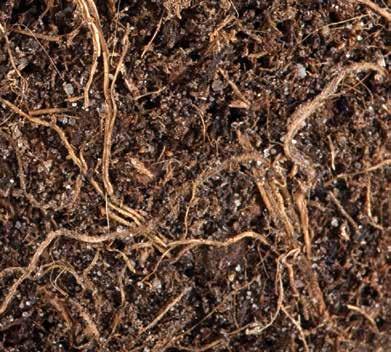

“By keeping the straw there, we’re maintaining or actually in the long run, we’re building soil fertility along the way,” Bruce said, “because most of the potassium that’s been taken up from the soil to grow a grass seed crop is taken up by the straw and is readily leached back out of the straw back into the soil.
It’s also providing tremendous organic matter and improving the soil’s microbiology. We’ve benefited tremendously from that decomposing straw.”
The practice has its drawbacks, Bruce acknowledged, in that the farm is not capturing revenue from the straw, which in some years can be significant, and it provides habitat for slugs. But, he said, the straw decomposes remarkably fast. “By the following spring, you won’t even be able to see it,” he said.
Moisture Retention
It’s difficult to see in terms of the economics of it. But we see it in the value in the response in the crops that we are growing. We feel that our crops are more resilient. I think the soil’s water-holding capacity has improved. And the more water it can hold, the better for us.”
Bruce Ruddenklau
Other practices they employ to improve soil health, such as planting and terminating cover crops, also have costs associated with them, Bruce said. But again, despite the fact that it is hard to measure what soil health brings to a farm, the couple has determined the benefits more than make up for the added costs.
(continued on page 24)
WINTER 2024 23
Helle and Bruce Ruddenklau check out the health of their soil on their farm.

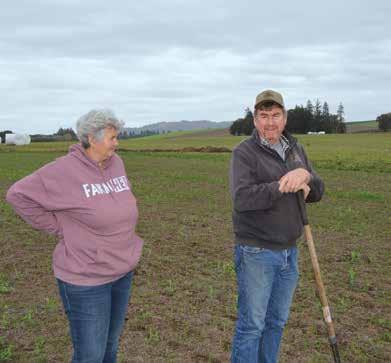

“It’s difficult to see in terms of the economics of it,” Bruce said. “But we see it in the value in the response in the crops that we are growing. We feel that our crops are more resilient. I think the soil’s water-holding capacity has improved. And the more water it can hold, the better for us.”
Improving a soil’s capacity to retain moisture, a benefit of building soil organic matter and one of the key tenants of soil health, can provide significant production benefits, Moore said. “Building soil organic matter increases the amount of water that can get into the soil, the amount that the soil can store and ultimately be available for crop production in non-irrigated systems,” Moore said.
Where irrigation is involved, a healthy soil profile can help reduce water and energy use. “If you store more water, you have more water available and you can maybe turn that spigot on a little bit later and turn it off a little bit earlier, saving you money. And if we can store more water, get more water into the ground and not pond and runoff the surface of the soil, that has direct implications to reducing flood risk,” Moore said.
Further, she noted that stabilizing soil particles, another benefit of building soil organic matter, helps aggregate soil and limits erosion. “And if we are resisting erosion, then we are keeping all those
expensive agrochemicals that you applied on site where they can be more effective,” she said.
A healthy soil complex can also reduce fertility applications, Bruce said.
Reduced Inputs
Bruce recounts a story from a few years back when the farm planted field corn for silage in a field planted to perennial ryegrass the previous three years in which the full straw load was chopped back and left on the field each year.
“We put on half of what we would expect to be the nitrogen requirement for that field and then we did the PSN test when the corn was knee high, and my agronomist comes back to me and said, ‘I can’t sell you more fertilizer. You don’t need it,’” Bruce said. “And so, we were thinking, well probably all those years of chopping back that straw increased the microbial activity to where it was storing and releasing nitrogen back into the system.”
Once the system was up and running, it was recycling nitrogen back into the system and making it available for other crops, Bruce theorized.
“It’s a fun thing to see happen,” he said.
Bruce said he also has noticed that it is easier to work the farm’s soil when he does the occasional tillage. “I’m finding the soil is so much more mellow and very workable,” he said. “It doesn’t take a lot of trips across the field to get the seed bed that we’re looking for.”
The couple also believe their soil helps improve their yields, particularly in dry years, such as this past growing season. “We were impacted by the season just the same as everybody else,” Bruce said. “Whether it was to the same extent or not, that’s hard to say. But I believe that keeping the ground covered last summer helped keep the moisture in there a little bit longer.
“And what we did see that was really impressive was we had a radish field that we no-till drilled into wheat stubble. And it was late spring before we could get the radish planted. And then we came back probably a week later, and I planted tall fescue into that with the idea that we’ll harvest the radish seed this summer and establish the tall fescue for next year. Then we had such a dry season, you know, it went from winter to suddenly in early May it was 90 degrees and full-on summer and it never rained at all after that. And the radish was poor, (continued
24 Oregon Seed
23)
from page
Helle and Bruce Ruddenklau on a no-till field planted to an oat cover crop with crop residue from a previous pea crop poking through the soil. The Ruddenklaus say they own a plow, but it doesn’t get much use.
A shovel full of soil from Ruddenklau Farms shows evidence of soil health. Note the soil porosity, presence of an earthworm and rooting structures.
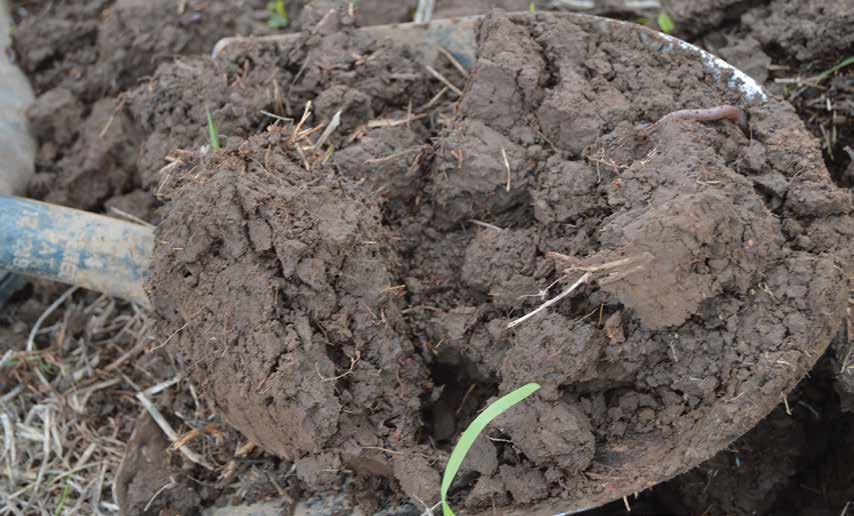
but not as bad as we feared. I thought it was going to be half a crop and I suppose it was two-thirds. But the tall fescue that was underneath it was just this wonderful stand. It is probably one of the best stands of spring-planted tall fescue we’ve ever had. And you know, it had competition from the radish. The radish is definitely going to pull the moisture. But we had all that straw cover over the ground and the radish might have helped shade it and it absolutely thrived in that environment.”
Motivations
On Ruddenklau Farms, where soil health and other conservation goals are always present, the number one consideration behind any management decision is still economics, Bruce said. “The value of the crop and what it means to us economically is first and foremost. We have to be economically viable first and foremost. And so, it’s a matter of how do we incorporate good production and good economics in our conservation farming techniques.”
But beyond that sits another motivation for the Ruddenklaus.
“I feel that it is my responsibility to be a good steward of the land and I feel good about doing things to improve soil health,” Bruce said. “It’s one

of those things that’s hard to look at strictly from an economic standpoint and say, ‘Yeah, I’m doing this because it’s going to save me fertilizer and I’ll spend less and bolster my bottom line.’ I mean a big part of it is because of that. But part of it is that it is good for the environment. I can stand up in front of somebody and say, ‘Look, I was a good caretaker of the ground.’”
Bruce also believes that employing conservation practices could ultimately help ease regulatory burdens on farmers as officials consider production restrictions to deal with nutrient runoff in the Mississippi River and its contributions to the hypoxic zone in the Mississippi Delta, algae growth in the Great Lakes and pollution in the Chesapeake Bay.
“We are very fortunate here that we don’t have the same level of government oversight as what is present in other places,” Bruce said. “In New Zealand, you have to get consent from the local government to apply fertilizer on your farm. In Denmark, it’s standard practice now to where you have to provide a plan showing what you are going to grow and then the government uses that to calculate a fertilizer allowance. And so, I’d prefer not to get there and to do things that are proactive to avoid that.” F
WINTER 2024 25


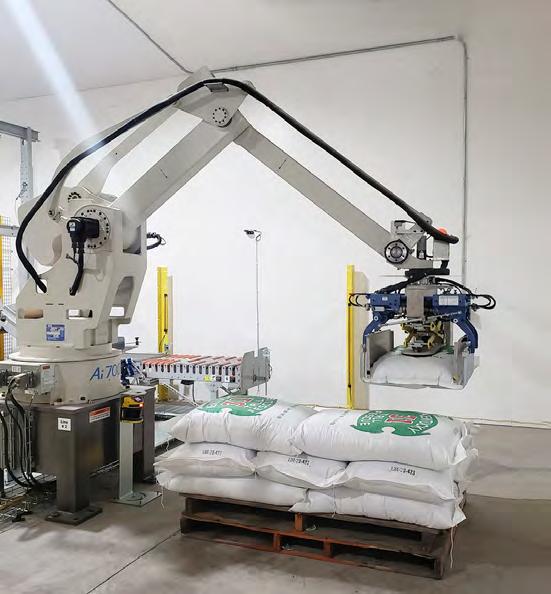



Current Available Crop Insurance Programs For Grass Seed in Oregon
By George Harris, AgWest Farm Credit Insurance Agent
Oregon farmers who are looking for crop insurance to cover grass seed have a variety of options. Like all insurance decisions, it’s important to know the positives and negatives of these options before deciding which coverage will provide the most value for different situations. Here are a few to consider:
Non-Insured Assistance Program (NAP)
NAP is issued through the USDA Farm Service Agency and provides coverage for all grass seed in coverage levels from catastrophic to buy-up levels of 50-65 percent. This program is capped at $125,000 indemnity for Catastrophic Coverage and $300,000 for buy-up. There is a Catastrophic Policy fee of $325, with a maximum of $825 per county. Buy-up coverage has a 5.25 percent premium rate, and the maximum charged premium is $15,750. The sales closing date is November 30 for NAP and beginning farmers, socially disadvantaged individuals and qualifying veterans can qualify for a 50 percent premium reduction and waiver of policy fees.
Positives:
1) Only policy available to insure grass seed by itself in the Willamette Valley.
2) 50 percent premium reduction and waiver of policy fees for young and beginning farmers, socially disadvantaged individuals and qualified veterans.
Negatives:
1) Limited coverage at 65 percent.
2) Includes all grass seed as one insurable unit.
3) Capped at a $125,000 limit for Catastrophic Coverage and $300,000 for buy-up coverage.
Whole Farm Revenue Protection (WFRP)
WFRP is issued through approved insurance providers and governed by the USDA Risk Management Agency. This program provides coverage for all crops harvested and purchased for resale during a farming entity’s tax year.
Coverage levels range from 50-85 percent in 5 percent increments, and the maximum amount of insurance is $17 million. Approved revenue is the lesser of the farm’s adjusted historic (five year) average or its approved expected income based on expected average yields and prices. The sales closing date is March 15.
An 80 percent subsidy is available from 50-75 percent coverage levels with two or more qualified crops (must be conservation compliant with Farm Service Agency to receive subsidy). Loss is based on an accrual basis, which counts only the income from the crops harvested in the covered year.
Positives:
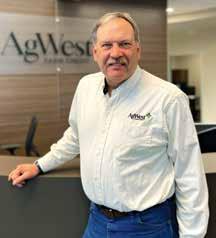
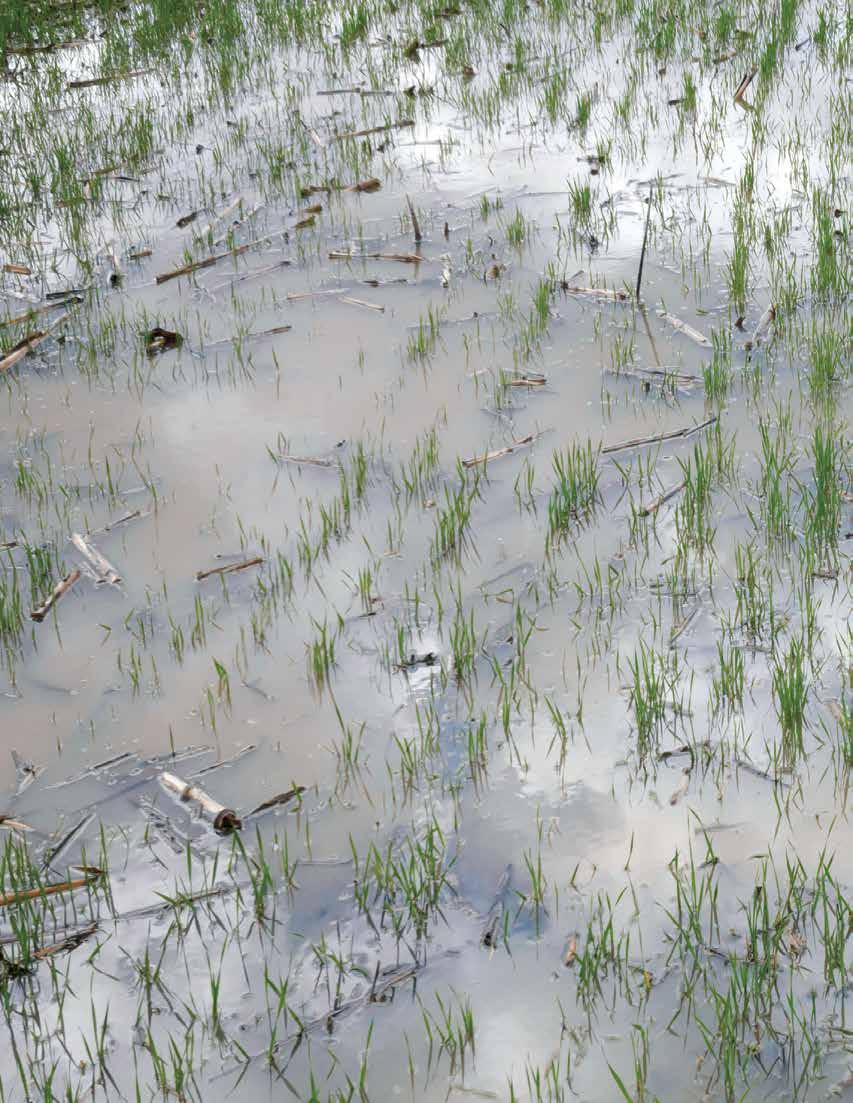
1) Covers all crops grown by a farm.
2) Sets a guaranteed gross income for the farm.
3) Heavily subsidized.
4) Provides protection against market downturns as well as yield losses.
5) Premium is very affordable at a 75 percent coverage level from one to three percent of the farm’s gross revenue based on the diversity of the farm.
6) Beginning farmers and qualified veterans qualify for an additional ten percent subsidy for up to ten consecutive years.
Negatives:
1) Loss is determined by the farm’s total gross revenue and not by individual losses by crop type.
2) Must wait until taxes are filed for the covered year to determine the amount of loss.
3) Value-added post-harvest income is not covered.
George Harris
4) Requires good record keeping of production and accounting.
5) Beginning farmers must have three years of farm income to qualify.
Multi-Peril Grass Seed Policy
The multi-peril grass seed policy is available in select counties of Minnesota, North Dakota and Idaho and this coverage is only valid for bluegrass and perennial ryegrass. It is available in Oregon through a written agreement. Coverage levels range from 50-75 percent in five percent increments, and catastrophic coverage is available. There is no limit on the amount of coverage, however, the grass seed must be grown under a contract. Coverage is limited to two years of production for bluegrass and the first year after establishment for perennial ryegrass, and for the field to be insured the following year it must be removed and reseeded. Insurance attaches on May 22 for perennial
(continued on page30)

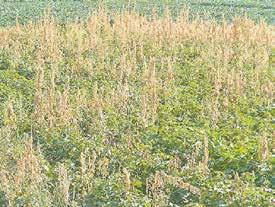
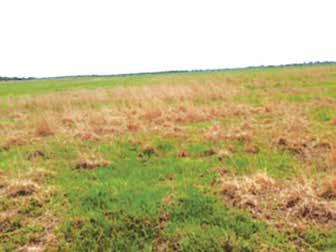
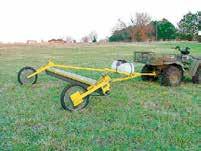
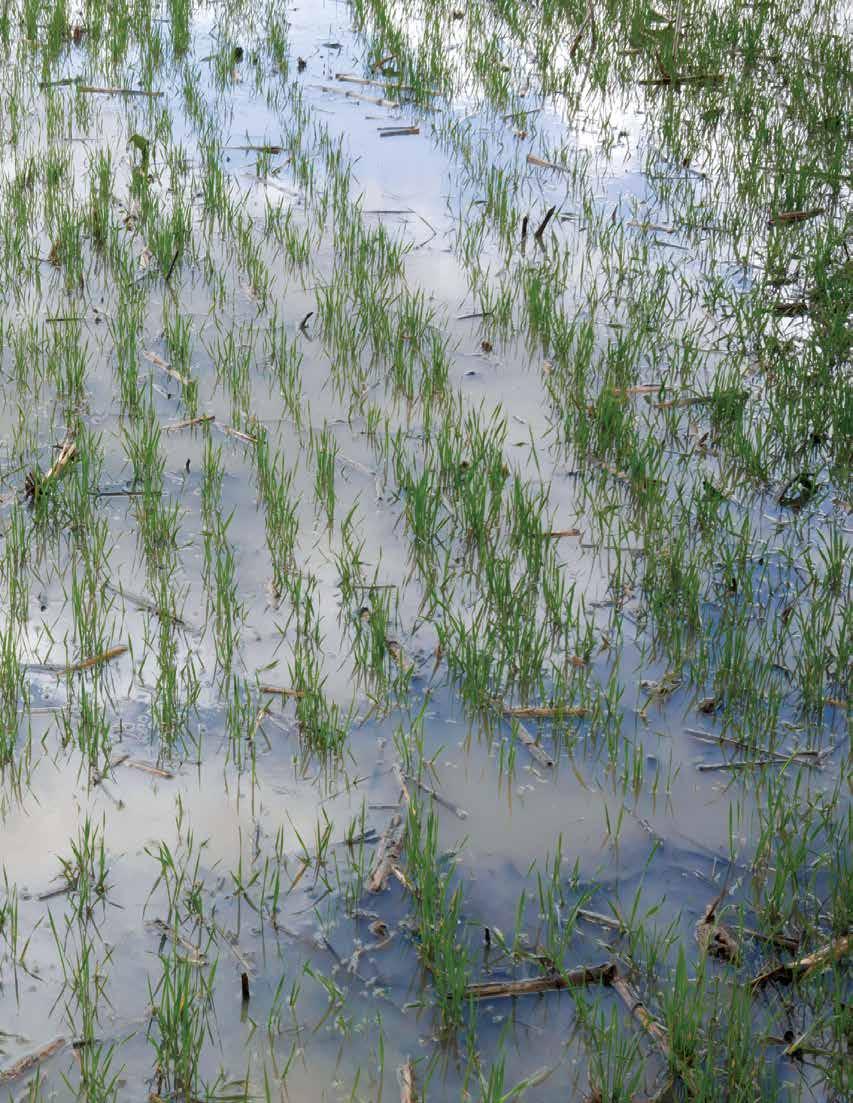

KILL ✦ Pigweed ✦ Thistles ✦ Johnsongrass ✦ Foxtail ✦ Smutgrass ✦ Milkweed ✦ Other Noxious Weeds SAVE your desirable crop The Rotating Weed Wiper That Works! www.weedproblems.com While Fuel, Fertilizer and Chemical Prices Soar, GrassWorks Weed Wiper™ Remains an Affordable Tool for Your Operation. “We treated giant smut grass in mid April. This picture was taken in mid May. Almost a 100% kill plus using glysophate at 10% is the most economical way we have found cost wise. The GrassWorks Weed Wiper holds up very well.” – Florida Rancher • One Pass • Up to 15 MPH No Drip & No Drift | Can be applied in windy conditions GrassWorks Manufacturing 888-80-WIPER • 479-790-1091 Farm Tested…Farmer Approved Mfg. in USA KILL WEEDS SAVE LEGUMES Kill Weeds for Less Than $1/Acre! FARMER TESTED. FARMER APPROVED. This Ain't like your Granddaddy's PVC pipe or sponge wicker! Tractor Mount Units 6' Up To 50' Wiped and Dying Pigweed Tow Behind Units Up To 15' Successful Results Wiping Smutgrass
(continued from page 29)
ryegrass that has been inspected and approved by the insurance provider.
Positive:
1) Only insurance available for grass seed.
Negative:
1) Very limited coverage as coverage is designed for a different growing location and does not insure multiple varieties of grass seed.
USDA Disaster Payments: Emergency Relief Program (ERP)
This program is formally known as WHIP (Wildfire, Hurricane Indemnity Program), and disaster must be declared in a county or adjacent county to qualify. In 2020 and 2021, $6 billion was allocated for disasters and ERP was paid out in phases. Phase one was paid to those who had received crop insurance claims, while Phase two was paid to those without crop insurance and those who did not receive a crop insurance claim in 2020 or 2021. Applications were not accepted until May 22, 2022. According to the USDA, Oregon Phase one recipients received over $65 million. Phase two was based on income reported on taxes for the year or two years before the disaster occurred, whichever was higher, compared to reported income for the year the disaster occurred. There is a payment limitation of $900,000 per entity. Disaster payments

of $3.7 billion has been allocated for 2022 disaster payments, which will follow the same Phase one and Phase two distribution. Those who receive a payment are required to purchase crop insurance for the next two years.
Positives:
1) Those who have NAP Insurance or MPCI and receive a payment are issued additional money very quickly because prefilled applications are mailed directly to the farmer.
2) No policy fees or premiums. There must be a declared disaster to receive a payment.
Negatives:
1) Payments are usually not made until one to two years after the disaster.
2) Payments are capped.
3) The amount of disaster money made available varies from year to year and the rules may change from year to year.
4) Those without any crop insurance must wait until Phase two is announced and then must apply for payment, instead of receiving a prefilled application in the mail. For detailed information about available risk management programs, please visit the Risk Management Agency website at rma.usda.gov. To learn more about insurance programs available through AgWest, please visit AgWestFC.com. F



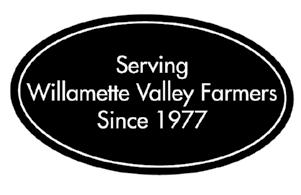

agronomy at its best


Spend more time in the field and less time in the office with Valley Agronomics Precision Ag.
Maximize your return on investment.
Valley Ag can help you increase the economic yield on your farm. advanced products
• knowledgeable crop advisors
• superior services


WINTER 2024 31
Chehalis Whiteson Cornelius Mount Angel Harrisburg Donald Stayton Rickreall
Former OSU Researcher Completes Ryegrass Genome

Pennsylvania State University weed science professor Caio Brunharo has completed the genome for Italian ryegrass.
The advancement means that Brunharo and others can now start delving into how herbicide resistance in the species is occurring and eventually establish gene markers for identifying plants with resistance.
“I feel good about this,” he said in an interview with Oregon Seed. “I’m an agronomist by training. I’m not really a geneticist or a genomics person, so it was a steep learning curve. I had to collaborate with a lot of people and finally, getting across the finish line feels great.
“And I think as a resource this will be useful for a lot of people, because (Italian) ryegrass is not only a problem in the U.S., it is a problem in Europe. I have collaborators in Israel that are working on (Italian) ryegrass. It is a widespread weed problem,” he said.
Brunharo’s research is a continuation of work started while he was a weed scientist at Oregon State University.
Brunharo said this latest development could have significant implications for Oregon grass seed growers battling resistant Italian ryegrass in that it can help growers quickly identify if resistance is present in a field and enable them to alter herbicide programs accordingly.
The development also could have varietal development applications in that breeders could use the genome to improve end-use traits like forage quality and easy termination as well as production traits like shattering and yield. And the development could have market applications for growers selling annual ryegrass seed into the Midwest cover crop market. Italian ryegrass is the same species as annual ryegrass, only in a de-domesticated form, Brunharo said.
Initially, however, the development represents what Brunharo described as the first phase of a long-term project to understand where and how resistance occurs in Italian ryegrass. The next step involves creating a mapping population, he said.
 Caio Brunharo, Ph.D.
Caio Brunharo, Ph.D.
From there, researchers can start comparing genes of resistant plants to susceptible plants and identify where in the genome resistance is occurring.
“And then we can start developing quick markers,” he said.
Brunharo is set to work on glyphosate resistance initially, and he hopes that by next fall to have identified genetic markers to enable labs to quickly determine from a leaf sample if glyphosate resistance is present in a ryegrass population.
“The samples could be small, like a one-halfinch piece of leaf,” he said. “It can be dry, it can be wet, whatever growers have available. And then in a couple of days, growers will get the answer if they have glyphosate resistance or not.”
Growers also will be able to test seed lots, he said, as labs will be able to extract DNA from crushed seed and determine if the lot contains any degree of glyphosate resistance.
The advancement is a dramatic improvement over existing technologies for determining if a plant is resistant to glyphosate, he said, a process that involves growing plants from seed and spraying them
32 Oregon Seed

to determine resistance, a process that, accounting for the time it takes ryegrass seed to break dormancy, can take up to three months.
Eventually, Brunharo said, the technology could evolve to the point where growers will be able to test It can be dry, it can be wet, whatever


33
Cornelius 503.640.2371 | Hopmere 503.393.1141 Rickreall 503.623.3101 | Tangent 541.928.3391 Corvallis 541.249.9609 | Dayton 503.868.7510 NutrienAgSolutions.com Nutrien Ag Solutions® ©2019 Nutrien Ag Solutions, Inc. All Rights Reserved Serving the Willamette Valley for the last 50 years. Thank you for your trust.
Chastain to Exit OSU, Ending 35-Year Run
Four years ago, when Tom Chastain sought to transition from interim to permanent department head of Oregon State University’s Department of Crop and Soil Science, there were those who questioned his wisdom.
“There were some people telling me, ‘You don’t want to be in charge of this department. You’ve got a lot of aging faculty,’” Chastain said.
Instead of a negative, however, Chastain viewed the pending retirements as an opportunity. “I looked at it as an opportunity to guide us through not only a period of transition but to essentially rebuild the department in a new way. To go in different directions,” he said.
Today, as Chastain prepares to retire, ending a 35 year run at OSU, including a five-year run as either interim or permanent department head, he is confident the department is well positioned for the future.
Among the changes Chastain brought to the department over the last five years, is a more robust expertise in ag technology, something that he long felt was lacking within the department, particularly in comparison to what was happening in the Midwest. Agriculture in the Midwest, he said, was and still is well ahead of Oregon when it comes to adopting ag technology, in part because in most cases the technology was developed for corn and soybean production systems, but also because the department had not placed an emphasis on helping growers adopt the technology.
“There are a lot of tools out there, but farmers were telling me that they didn’t know how to make it work in grass seed crops,” Chastain said.
Chastain sought to address that by replacing retiring faculty with researchers schooled in ag technology. And he has largely been successful, bringing on weed scientist Pete Berry, who brings ag technology expertise from the private sector into his position; new wheat breeder Margaret Krause, who has expertise in phenomics; Jing Zhou, a precision agricultural scientist who started in October; and Yakun Zhang, who started as a soil scientist in midNovember.
“And there are others still coming as well that we are working on bringing into the department,” Chastain said. “And so, it is really changing the
 Tom Chastain
Tom Chastain
department’s focus to more of an emphasis on geospatial analysis of soils and crops and precision agriculture.”
Leadership Tenets
Chastain attributed the thought process behind many of his leadership decisions to a list of tenets that he developed when he first sought the permanent position. One of the tenets, he said, is that a good leader should allow staff to self-govern.
“One of the things about being a department head is that to become successful, you become invisible, because people are doing their jobs and you don’t really need to bark out orders and tell them what to do. They know that,” he said.
“I never wanted this to be a department where the department head tells you exactly how they want things done, because that leader isn’t necessarily the person with the best ideas,” Chastain said. “It’s the people out in your faculty. You need to listen to them. That is something I’ve really worked hard to do to get the input from the faculty, recognizing valuable opportunities and using those opportunities to implement concrete actions for the betterment not only of our department, but the industries that we serve.”
34 Oregon Seed
That is not to say that Chastain didn’t actively manage. And, he said he frequently challenged faculty and, in some cases, the department’s clientele, to get out of their respective comfort zones and move the department and Oregon agriculture forward.
Another goal Chastain brought to his position was to improve the faculty communication with its clientele and with leadership at the university level and within the College of Agricultural Sciences. Here again, Chastain has largely been successful. Take for example, the Hyslop Farm Field Day, an annual showcase for field crops research put on by Crop and Soil Science faculty in conjunction with USDA Agricultural Research Service’s Forage Seed and Cereal Research Center. When Chastain started as department head, attendance at the field day was averaging between 50 and 60, he said. “We’re topping 250 now,” he said.
Among changes he brought to the field day, Chastain changed how the department organized the event by beefing up the event’s planning committee and moving up the planning process, which allowed for better promotions, and he expanded opportunities to showcase research with standalone exhibits.
Scientific Legacy
As Chastain prepares to retire on June 30, he also leaves behind a legacy as a scientist that arguably goes well beyond his work as an administrator. As a testament to that, Chastain recently was named a fellow of the Crop Science Society of America and the American Society of Agronomy. He is the first OSU faculty to receive the two fellows in more than two decades.
Chastain’s research career started at the OSU Columbia Basin Research and Extension Center in Pendleton, where he worked for three years before coming to the Corvallis campus in 1992 to serve as an associate professor of crop physiology. When Chastain first came to the campus, the grass seed industry was struggling to transition from thermal to non-thermal residue management and OSU researchers were thrust into the role of facilitating the transition.
“We tried to come up with some ways that the grass seed industry could transition from primarily burning to non-burning methodologies over a short period of time to meet state mandates,” he said. “We had a good team and we really worked hard to make that happen.”
Chastain also was on the front lines pursuing the use of plant growth regulators in grass seed production, an input widely used today but not so when Chastain began working on the technology.
“We were able to find a couple of them that worked and get them registered for use in grass seed crops,” he said. “And they really have done a great job of increasing seed yields for producers without adding much to the cost of production.”
When Chastain leaves the College of Agricultural Sciences, he will also leave behind a distinguished career in the classroom, where he taught the science of seed production to generations of grass seed farmers. And his leadership during the COVID shutdown, which coincided with his transition from interim to permanent department head in the spring of 2020, was instrumental in helping keep students, as well as faculty, engaged during a difficult time.
Moving this thing forward is really what I wanted to do. And I think now is the time to step down and let the next department head take this department to the next step.”
Tom Chastain
“We had to pivot. We had to do business differently,” Chastain said. Fortunately, he said, the university had some experience with remote learning through the Ecampus online platform that OSU has offered students now for several years. “We were already working on alternative ways to deliver classroom material and so we could use those tools,” he said. “We just had to apply those tools to our situation.”
Chastain’s decision to retire this year is based on several factors, he said. “I’ll be 67 next summer. I’m basically in good health. My wife (a cancer survivor) is in good health right now and it’s a good time to get out and enjoy life and let the next person come in and try to continue to build this thing,” he said.
Chastain added that he feels blessed to have had the opportunity to lead the department these last five years. And, he said, when he decided to pursue the position as permanent department head four years ago, he did not do so for personal advancement.
“I was really just trying to help this to be a better place; to help our industry and to do a better job of teaching our students. And those are really my motivations.
“Moving this thing forward is really what I wanted to do,” he said. “And I think now is the time to step down and let the next department head take this department to the next step.” F
WINTER 2024 35
Chastain, Bowers Honored at Seed League
Tom Chastain, head of the Oregon State University Department of Crop and Soil Science, said he was humbled by the recognition as he accepted the Oregon Seed Council’s Seedsman of the Year award December 5 at the Salem Convention Center during the Oregon Seed League’s Annual Meeting.
“I started out as a graduate student coming to these meetings back in 1983,” said Chastain who is retiring at the end of June after a 35 year career at OSU. “And I’m really thankful for the opportunity to have served all of you for all of these many years.
“All I can say is thank you,” he said.
In presenting the award, Oregon Seed Council Executive Director Megan Chuinard said Chastain exemplified the best of qualities as a researcher, as head of the Department of Crop and Soil Science, a role he filled the past five years, and as a teacher.
“He truly loves teaching and planting seeds of innovation and watching students learn and grow,” Chuinard said.
Earlier in the meeting, Eric Bowers, who operates Bashaw Land and Seed with his daughter and wife and is a previous winner of the Seedsman of the Year award, accepted the Oregon Seed League’s Voice of the Industry award.
Like Chastain, Bowers said he has a long history of attending Oregon Seed League meetings. “I’ve been coming to Seed League for 40 years,” he said while thanking the Seed League Board for the award. “I haven’t been to all of the meetings (during that time), but a good share of them.”
Among his credentials, Bowers served 12 years as a member of the Tall Fescue Commission; he served six years on the Oregon Ryegrass Commission; he has been on the Board of Directors for the Oregon Grass Seed Bargaining Association; and he has served on the Oregon Seed Council going back nearly 40 years, including as chairman of several committees and as Oregon Seed Council president.
Bashaw Land and Seed grows a variety of turf and forage types of grass seed, as well as wheat and specialty crops. F
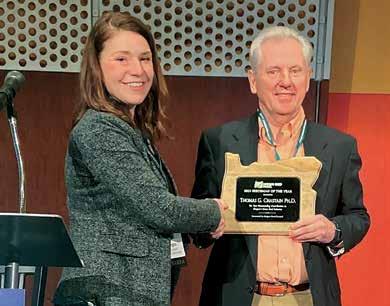

36 Oregon Seed
Eric Bowers accepts the Voice of the Industry Award at Oregon Seed League’s Annual Meeting with his daughter, Marie Bowers, and grandson Hank Stagg, 5.
Tom Chastain accepts the Seedsman of the Year award from Oregon Seed Council Executive Director Megan Chuinard at Seed League, December 5 in Salem.
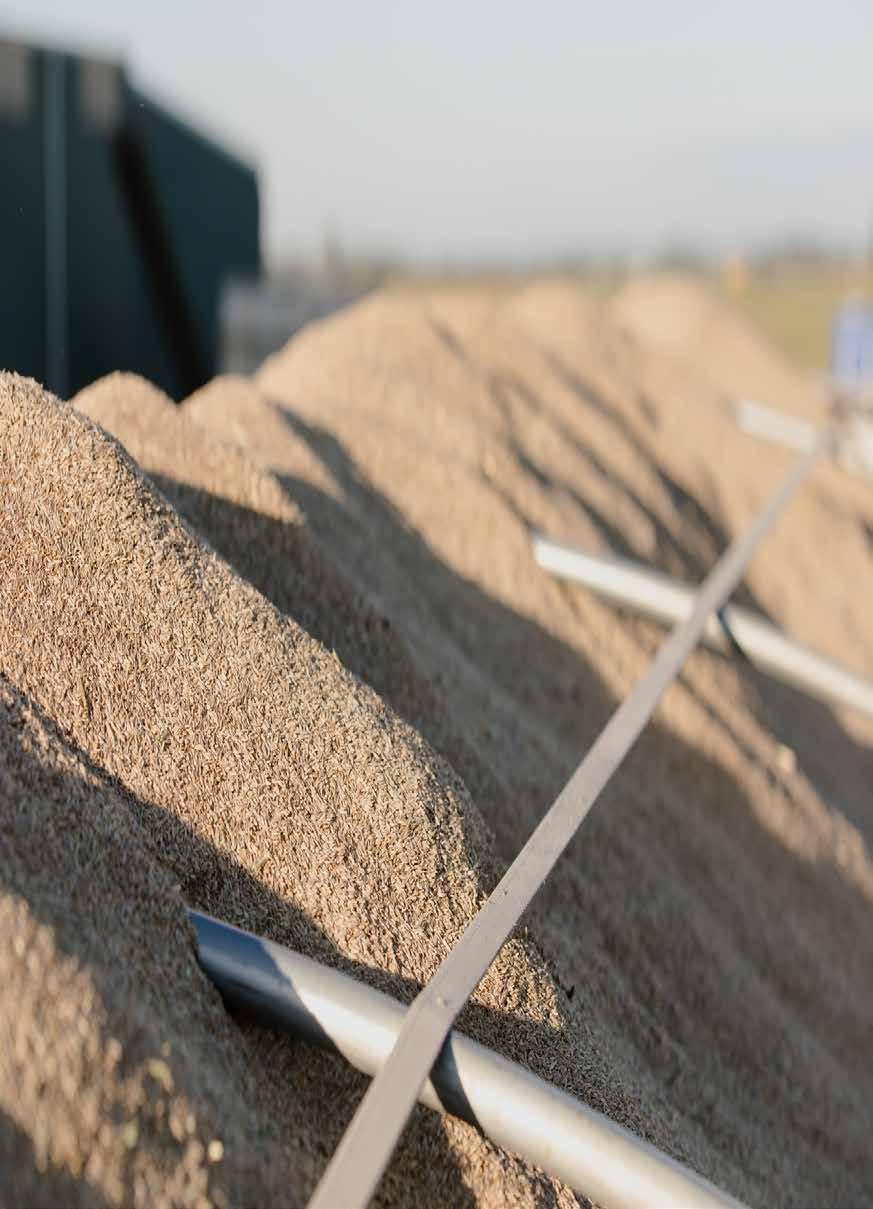







WINTER 2024 37 (503)678-5932 www.marionag.com support@marionag.com MARION AG SERVICE, INC Seed Cleaning Pest Management Research & Development Sand Blasting/Paint Shop Sand Services Grass Seed Contracts ask us about ask usabout ask usabout ask usabout SPRING 2023 (503)678-5932 www.marionag.com support@marionag.com MARION AG SERVICE, INC Conventional & Organic Fertilizer Lime & Dolomite Application Variable Rate Application Seed Cleaning Pest Management Research & Development Scouting Services Testing & Analytics Crop Imagery/Sensors Sand Blasting/Paint Shop Sand Services Grass Seed Contracts Growing Together ask us about ask usabout ask usabout ask usabout (503)678-5932 www.marionag.com support@marionag.com MARION AG SERVICE, INC Conventional & Organic Fertilizer Lime & Dolomite Application Variable Rate Application Seed Cleaning Pest Management Research & Development Scouting Services Testing & Analytics Crop Imagery/Sensors Sand Blasting/Paint Shop Sand Services Grass Seed Contracts Growing Together ask us about ask usabout ask usabout ask usabout


Call today for more information about LOCK OUT®. 541-926-1200 SLUGS CAUSE $70-100 MILLION DAMAGE TO THE GRASS SEED INDUSTRY PER YEAR An ounce of Prevention Today is Key to Saving Your Investment. WilburEllisAgribusiness.com For information only. Not a label. Prior to use, always read and follow the product label directions. Wilbur-Ellis logo and LOCK OUT are registered trademarks, and MOLLUSCICIDE logo is a trademark of Wilbur-Ellis Company LLC. The Winning Ag Experience. WHY LOCK OUT ® ? • Superior attractant package • Pellet will not mold • Pellet will not break down • Excellent field visibility • Uniform pellet size for even application • Extensive research and development POWERED BY Heavily infested fields average 9 slugs per sq. ft.
Young Seed Farmers Take Home Insights from Denmark
For Woodburn seed farmer Jon Iverson, it was the percentage of land dedicated to agriculture in Demark that most impressed him after a tour of Danish seed farms this past June.
“They are farming 61 percent of their acres,” Iverson said. “And their fields were a lot bigger than I was expecting. I saw a lot of big equipment. It was impressive.”
For Stayton seed farmer JR Beitel, it was the connections he made with farmers both from Oregon and from Denmark that served as his highlight.
“It was a good way to meet growers both from here and overseas and make connections,” Beitel said. “Hopefully we will stay in touch and learn from each other as we go.”
For Kevin Hawman of Hermiston, it was the intricate intercropping and the fact Danish grass seed farmers direct-cut nearly all their acres.
“They don’t swath like we do,” Hawman said. “They direct-cut 90 percent of their acres.
“I feel like we’re a little different here in Hermiston than in the Willamette Valley,” said Hawman. “And then you go to Denmark and it’s even more different.”
Iverson, Beitel and Hawman were among 15 participants in the 2023 Young Farmer Seed Production Tour of Denmark. The tour, which included seven days in Denmark and an optional three days in Iceland, provided Oregon farmers insight into different ways of producing grass seed, driven in part by differences in climate and regulations.
One aspect of Danish production that impressed the three Oregon seed farmers was the extensive intercropping used in Danish seed production, intercropping driven in part by government regulations restricting open ground in seed fields and chemical usage.
“They will plant spring barley every other row,” Iverson said. “And with the same planter they will plant every other row to Kentucky bluegrass or a fescue. Then they’ll take the barley crop in year one and then take the grass crop in year two, three and sometimes year four.
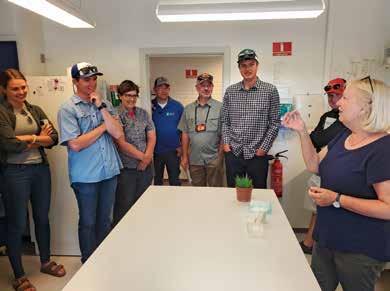
Members of the Young Farmer Seed Production Tour of Denmark at DLF Research Farm in Denmark this past June. Oregon seed growers, OSU Extension personnel and affiliated industry representatives participated in the tour.
“I thought that was a pretty smart way to get a yield from year one,” he said. “It’s not as good as it would be if you just did straight barley, but it’s better than losing a year establishing a grass crop.”
“I thought it was really interesting that they were getting a crop in that establishment year that we normally don't have in fescue or bluegrass,” said Beitel. “And they were getting better control of their rattail (fescue) and other weeds, just because they had a crop out there to compete with it all.”
One farmer who particularly impressed the Oregon growers was intercropping barley and white clover with the grass crop. “He would take the barley in year one, the white clover in year two and then he’d take the Kentucky bluegrass years three, four and five, which was really interesting,” Iverson said.
“Part of why they farm that way is that they don’t have the fall we have,” Iverson added. “They can’t get their fall-planted grass in.”
(continued on page 40)
WINTER 2024 39
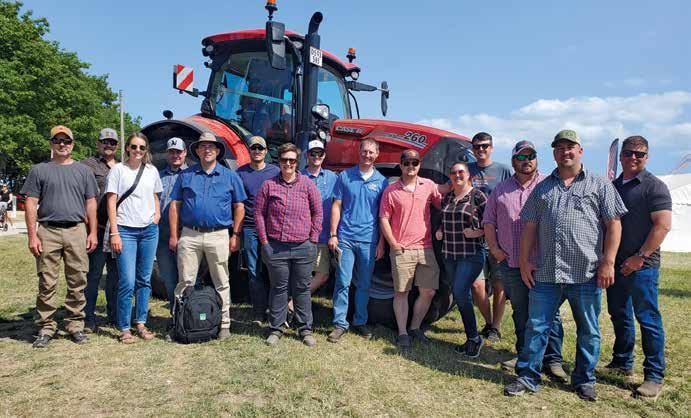
(continued from page 39)
Also, Beitel said, growers use intercropping to avoid having to keep ground covered with a cover crop that won’t generate any income. “That way they have a crop growing out there, because they don’t want open ground,” Beitel said.
The Danish farmers also utilize shielded sprayers to spray between grass rows after taking out their secondary crop, Iverson said. “After they take that barley crop, for example, they can come back with a shielded sprayer and spray right in between the grass rows and clean things up and use less chemicals,” Iverson said. “That was really intriguing.
It was really good to see how someone is doing exactly what you are doing but in a different country and in a different way.”
Jon Iverson
“It was really good to see how someone is doing exactly what you are doing but in a different country and in a different way,” Iverson added.
Beitel said one of his trip highlights was the connection he made with the Danish family that he stayed with part of the time in Denmark.
“We spent two nights at his place, met the family, met the farm workers and saw his operation,” Beitel said. “That was probably one of the best parts of the whole tour.”
In addition to the international connections growers made during the trip, Iverson said he enjoyed hanging out with the Oregon growers.
“I spent a lot of time with 14 people from Oregon that I didn’t really know until we went on the trip,” he said. “I enjoyed that, and I think it is very important, especially as the industry gets smaller, to know who else you are in the industry with and to build those networks within the industry.”
Some of the participants also stopped in Iceland on the return trip and were given presentations on Icelandic agriculture.
“The marketing director from the Icelandic Farmers Association gave a really good overview of what it’s like to farm in Iceland and the challenges they face,” Iverson said. The small group spent two-andone-half days in Iceland before flying home.
Iverson, who along with OSU Extension Seed Production Specialist Nicole Anderson, was the main organizer of the trip. He said he initially was worried that the trip wouldn’t come off as hoped because it had been delayed due to COVID.
“We were originally going to go in June of 2020, so it’s been three years and Nicole and I were a little worried that we were going to lose some enthusiasm from the group,” Iverson said. “But as it turned out, the trip was amazing.”
Anderson and Darrin Walenta, OSU Extension agronomist, joined the farmers and fieldmen who participated in the trip. F
40 Oregon Seed
Members of the Young Farmer Seed Production Tour at a farm fair in Roskilde, Denmark.
Ron Burr, Who Helped the Industry Overcome Loss of Field Burning, Dies at 78
Ron Burr, who was instrumental in helping the Oregon grass seed industry revise weed management strategies after losing the option to burn fields, passed away at home on his farm near Sublimity, Oregon, on October 29 from a rare form of blood cancer and heart disease.
He was 78.
Burr, who received his master’s degree from Oregon State University and his doctorate from Purdue University, both in weed science, came to work for the grass seed industry in the late 1980s, shortly after forming his own company, Ag Research Incorporated.
Prior to that he worked as Extension Weed Specialist at Oregon State University and with RhonePoulenc.
When he started contracting to conduct weed management research with the Oregon Seed Council, the industry was in the throes of adapting to nonthermal residue management; this after decades of burning fields after harvest, a practice that provided excellent weed control, among other agronomic benefits.
“It was an important period of time when the industry was transitioning from a burning culture to essentially a non-burning culture,” said Dave Nelson, former executive secretary of the Oregon Seed Council, who worked with Burr for nearly two decades before Nelson retired in 2008. “We were all wondering how to grow grass seed without burning and Ron spent a lot of time looking for new pesticides that we could use and testing old materials that might work and then getting them registered for grass seed.”
Burr, who grew up on a grass seed farm in Sublimity, always had a strong attachment to the Oregon grass seed industry, according to his wife of 55 years, Sara Burr.
“That is where his heart was,” Sara said. “And he was really dedicated to the growers.”
His work drew praise from Steve Salisbury, research and regulatory coordinator for the Oregon
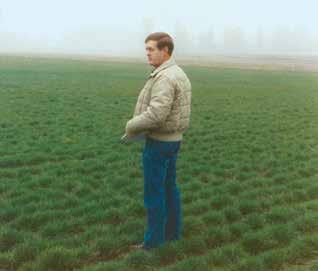
Ron Burr, researching weed control in this 1992 photo, pioneered the Oregon Seed Council’s pesticide registration program and was instrumental in helping growers develop weed control programs in the absence of field burning.
Seed Council, who said Burr served as a mentor for him when Salisbury started working for the Oregon Seed Council in 2014.
“He pioneered the Oregon Seed Council pesticide registration program,” Salisbury said. “And his work for the industry was monumental in terms of all the research he did to get pesticides registered for grasses grown for seed. The amount of detail that guy would generate and the service he provided the seed industry was spectacular.
“And when Ron Burr got up to speak at Seed League, the entire place shut down,” Salisbury said.
“I remember standing in the lobby and people just started flooding into the conference room to listen to his presentation. That is the kind of respect that he commanded from the industry. It was like no other.
“And the information that he would share was off the chart excellent,” Salisbury said.
Nelson added that Burr’s ability to communicate was instrumental in helping register pesticides for use in grasses grown for seed. “Ron was very meticulous and very detail oriented and he was able to communicate in a way that was meaningful for both the growers and the manufacturers and the regulators,” Nelson said, “and I mean all the way from the state Department of Agriculture to the EPA and everybody up and down within that structure.”
Sara Burr, who still lives on the farm that Burr grew up on, said that Burr found fulfillment in his work and appreciated the growers and researchers he worked with over the years. “He really enjoyed working with the growers and appreciated all of them and the people at Oregon State (University) and the other scientists he worked with,” Sara said.
“He really loved Oregon and he loved agriculture, and it was a huge part of him,” she said. F
WINTER 2024 41
Photo by Bob Mitchell
OSU Extension Report
By Jeremiah Dung and Darrin Walenta, Oregon State University
Ergot Alerts: Providing Growers Information on Disease Risk
Ergot continues to be an important disease for irrigated Kentucky bluegrass and perennial ryegrass seed growers in central and eastern Oregon. The disease, which causes flowers to produce fungal structures called sclerotia instead of seed, causes a multitude of problems before, during and after harvest. Besides reducing yield, the sclerotia in harvested seed can be very difficult to remove, resulting in lost seed during the seed conditioning and cleaning process. The sclerotia also contain alkaloids that are toxic when consumed by mammals, posing a threat to livestock who feed on diseased grasses or grass seed byproducts.
The ergot pathogen has a complex lifecycle, beginning with the sclerotia that are found in seed lots used for planting, previously infected fields or in field margins that harbor weedy grass hosts. Sclerotia that overwinter will germinate in response to warming temperatures and soil moisture, eventually producing fruiting bodies that produce airborne ascospores which initiate disease infection in a given growing season. These ascospores infect
Banking with a Local Focus:
• Benefit from a relationship with your banker who is empowered to make decisions based on their knowledge of your business, the community, and the local economy.
• Experience the personalized care you expect from a community bank with access to modern banking technology that makes managing your money easier.
the unfertilized flowers of susceptible grass hosts like Kentucky bluegrass, perennial ryegrass, fescues and cereals such as rye and triticale. Once infected, the flower fails to produce a seed and instead produces a sclerotium, completing the lifecycle of the fungus. Sclerotia are either removed during harvest, resulting in problems during seed cleaning, or are left in the field to serve as primary inoculum the following year. Management of ergot requires a multi-faceted approach, including using clean seed for planting, crop rotation, cultural practices and fungicides applied during flowering, or anthesis. Since the ergot fungus can only infect unfertilized flowers of susceptible grass species, fungicides can be applied to flowers during anthesis to prevent infection of the ovaries. However, disease risk, which is partly based on the timing and duration of ascospore production by the ergot pathogen, can vary from year to year and among seed production regions. The timing and amount of inoculum production can also vary within a farm based on microclimates, field history and cultural practices. Together with the variability in

42 Oregon Seed
OSU Extension Report Member FDIC www.citizensEbank.com • 844-770-7100
West of the Cascades. East of the Pacific. Way Beyond Expectations.

air
capture
flowering time and duration of different grass species and varieties, information on potential disease risk can assist growers when decisions need to be made on when to initiate chemical management practices for ergot. The use of fungicide for ergot management typically starts later than for other fungal pathogens such as powdery mildew and rust.
The 2023 grass seed cropping season marked our ninth year of delivering the Ergot Alert system to grass seed growers in central and eastern Oregon. While the research tools behind the Ergot Alert system and the delivery mechanism have evolved over time, the goal has remained the same; to provide timely information on the presence of ergot inoculum in grass seed production regions of the inland Pacific Northwest. The Ergot Alert system starts with a network of spore traps to collect air samples in grass seed fields. If airborne ascospores of the ergot pathogen are present, they can be detected and quantified using DNA-based methods like quantitative real-time PCR (polymerase chain reaction), which is a technique developed
by OSU with support from the Oregon-Washington grass seed industry. The results are then shared to subscribers of the Ergot Alert system via e-mail and blog formats.
This last season of the Ergot Alert system experienced a tremendous amount of grower participation in actual monitoring activities which led to 19 spore traps deployed in 11 locations around central Oregon, northeastern Oregon and the Columbia Basin of Washington State. This was
(continued on page 44)

WINTER 2024 43 OSU Extension Report
• Laser Controlled, Surface and Subsurface Drainage • Excavating and Site Preparation • Ponds and Ditching • GPS Mapping 541-740-5957 P.O. Box 235 • 33011 Garden Ln Tangent, Oregon 97389
One of the rotating arm
samplers used to
ascospores of the ergot pathogen for the Ergot Alert system.
(continued from page 43)
by far the largest deployment of spore traps to date and it was made possible by our grower cooperators, collaborators and lab personnel. Overall, a total of eight Ergot Alert notifications were released weekly over the growing season (https://blogs.oregonstate. edu/coarecplantpathology/category/ergot-alerts/).
It was particularly interesting to see the variability in spore production amongst the different fields in each
location, and even within the same growing operation or locale, emphasizing how challenging it can be to predict and manage this disease.


ISG would like to thank all of our growers for their loyal support!
Regardless of its seeming unpredictability, there are some factors that can increase the risk of ergot occurring in a given field. Field history plays an important role. Perennial fields with a history of ergot are more likely to harbor sclerotia, be impacted by ergot epidemics and serve as inoculum for neighboring fields. Weedy grass hosts, such as wild rye, can also be reservoirs of the pathogen and increase risk of disease. Cool-season grass species or cultivars with long, staggered or uneven flowering periods are also more prone to infection. Finally, cool, wet conditions during anthesis, or frost periods that damage pollenbearing anthers leading to male-sterility during flowering, can also increase disease.
At ISG, we recognize the importance of commitment and dedication to each of our growers. We take our time, experience and knowledge to help each grower make crop decisions to better their business. Give us a call today, our staff is always available for questions, concerns and advice from planting to harvest or from cleaning to sales.
CRYSTAL COX
Sales & Marketing
971-259-9134
ccox@integratedseed.com
FRANK PRANTL
Field Representative
541-570-9579
fprantl@integratedseed.com
KEN PIETROK
Field Representative
503-932-8165
kpietrok@integratedseed.com
DAVE JOHNSON
Field Representative
509-539-1229
djohnson@integratedseed.com
JIM PARSONS
Field Representative
503-580-9425
jparsons@integratedseed.com
ROB HARRIS
Field Representative
541-990-1138
rharris@integratedseed.com
As we move closer towards the 2024 production season, we look forward to continuing our research and Extension efforts in grasses grown for seed, working with growers and seed companies and interacting with crop consultants and field personnel. Please don’t hesitate to contact us if you are interested in learning more about disease management in grass seed crops.
Jeremiah Dung:
Jeremiah.Dung@ oregonstate.edu or 541-4757107
Acknowledgement:
The authors would like to thank the Eastern Oregon Kentucky Bluegrass Working Group for funding this effort. F
44 Oregon Seed OSU Extension Report

WOregon Seed Council Update
Megan Chuinard, Executive Director, Oregon Seed Council
hat an incredibly productive year it has been!
I’m delighted to see so much energy in the Oregon Seed Council (OSC) Board of Directors and each of our members this year.
We have successfully addressed a number of initiatives with expedience, including organization items for the board; creation of a mission, vision and values statements; reinvigorating the committees; addressing a number of policy issues; and strategic planning.
One of the organizational items we are excited about is the committee process. It provides an opportunity for industry members to get involved and provide a voice in our body of work. Our active committees include:
• Bylaws Review
• Government Affairs
• Public Relation
• Scholarship
• Seed Services Advisory Committee
• Smoke Management
Mission, Vision and Values Statements
We are also proud to announce Oregon Seed Council’s updated mission, vision and values statements:
Mission
Our mission is to engage in issues of importance to the Oregon seed industry, enriching collaboration within its membership and all related parties.
Vision
Oregon Seed Council’s vision is to be the leading voice in the Oregon seed industry; to elevate the importance and quality of Oregon grown seed within the public, media and government.
Values
Integrity – We base our reputation on being an honest and ethical organization. We believe in standing behind our word.
Respect – We honor each individual relationship and seek value in people’s unique experience. Collaboration – We hold in high regard our associates and work to build positive relationships with those outside our industry.
Accountability – We participate, delegate and evaluate to ensure the highest level of transparency for our organization.
Strategic Planning
The Oregon Seed Council Board of Directors has the pleasure of partnering with AgWest Farm Credit to conduct a strategic planning process. This process will help the Oregon Seed Council Board of Directors fine-tune and focus on programs and initiatives that best support the mission of the Oregon Seed Council, and our industry as a whole, and will lead us into success into the future. This member-driven process is anticipated to be completed in June, and from there, we will implement strategies to support the goals that result from this work.
I want to give a huge thank you to AgWest Farm Credit, who has waived the facilitation fees. They have been a wonderful partner as we map out opportunities for the Oregon Seed Council.
Federal Policy
At the time of this writing, the federal government has selected a speaker, and during that process, the drafting of the Federal Farm Bill, which is typically reauthorized every five years, was delayed. Funding has been reauthorized temporarily, but the work will continue - with hopes of a new Farm Bill in the early Spring.
We have been advocating for:
• Risk management tools, including crop insurance accessibility for growers in Oregon.
(continued on page 46)
WINTER 2024 45
Oregon Seed Council Update
Oregon Seed Council Update
(continued from page 45)
• Incentives for cover crop use in the corn and soybean growing area of the Midwest.
• Increase and make specialty crop grants accessible.
• Tri-state (Oregon, Washington and Idaho) grants for grass seed production research. This grant program provided around $1.5 million to the Northwest annually for research projects.
• Accessibility of the IR-4 program for our industry.
EPA Update
In November, the Environmental Protection Agency (EPA) provided a response to the more than 10,000 comments on the Vulnerable Species Pilot (VSP) Program. As a refresher, this is the program, where the EPA proposed 1 million acres of the midsouth Willamette Valley be categorized as Pesticide Use Limitation Areas (meaning no use of pesticides) to protect the Taylor’s Checkerspot Butterfly. For reference, this species has a known habitat of about 20 acres in Oregon.
Oregon Seed Council, growers and partners contacted the agency calling into question defined PULAs, science, mitigation, selection of species, economic impact and other issues.
While our work is not done on this issue, the following summarizes EPA’s current thinking on revisions to the VSP framework following consideration of the comments:
• Narrow the areas within the endangered species range map to only include locations that are important to conserving a species;
• Clarify the scope of the VSP for non-agricultural uses;
• Clarify potential exemptions to the proposed mitigation and whether additional exemptions are needed;

Anderson 503-364-3346 or shawn@ostlund.com
• Revise some of the proposed mitigation and include additional mitigation options specific to non-agricultural uses and specialty crops;
• Revisit how EPA selected the pilot vulnerable species; and
• Develop a consistent approach to reduce pesticide exposure to listed species from spray drift and run-off.
The EPA plans to release its revisions by fall of 2024. We will continue to track and engage in this issue acting as an advocate for our industry.
Legislative Session
We are just around the corner from the 2024 Legislative Session. We know the major topics are going to be centered around housing and homelessness, Measure 110, education funding and water. That gives us a little breathing room during the session, but we’ll still be actively engaged to ensure the industry is represented well.
During the short session, which begins February 5, each individual legislator (90 total) is authorized two personal bills (a field of 180 possible bills), and every policy committee can submit three bills. OSC tracked updates on bills for those that have potential to impact the Industry. Recently, the Governor has signaled she will seek investments of $600 million for housing and homelessness and focus on education funding following the Portland Public Schools strike. Additionally, many of you may have heard that due to the Department of Transportation budgetary shortfalls, the department had announced it would reduce its winter road care, particularly on rural roads. Shortly following this announcement, legislative leadership noted they would be seeking an additional $19 million for ODOT to cover costs of winter road care needs.
Contact
I am truly honored to serve you and the Oregon seed industry on policy and other issues. If you have any questions, or want to get engaged in the OSC, please feel free to reach out.
Megan Chuinard Executive Director
Oregon Seed Council
Megan@MAC-Consulting-LLC.com
(503) 585-1157
46 Oregon Seed
PLANT THE SEED AND WATCH IT GROW ADVERTISE WITH OREGON SEED For more information contact Shawn

Commissions Update
Bryan Ostlund, Administrator, Oregon Ryegrass, Tall Fescue, Fine Fescue and Clover Commissions
As we move into 2024, the grass seed industry’s commitment to research, in partnership with Oregon State University and the USDA Forage Seed and Cereal Research Unit in Corvallis, as well as with the industry’s Oregon Seed Research Institute, has never been more apparent. And we look forward to a continued emphasis on research in the future.
With OSU College of Agricultural Sciences Dean Stacy Simonich adding personnel at OSU and with Ryan Hayes building staff on the USDA-ARS side, we have some great new researchers in the pool and some exciting opportunities ahead to address some of our key production issues.
Both of these leaders continue to build incredible programs that are really helping the industry.
Last year we saw the most proposals that we’ve seen come towards grass seed in decades. And the commissions’ research budget almost doubled, going from around $250,000 to $500,000. In addition, there were significant expenditures in equipment and endowments. On the equipment side, the industry provided a majority of the funding needed for a new plot harvester for use by OSU’s research faculty at the Hyslop Farm and probably a few other places, as well.
And so, 2023 was kind of a watershed year where the grass seed and clover industries really upped the game on the research front, and I see the industry continuing to maintain that commitment this year. We are all kind of watching the markets and are curious to see how seed movement may impact budgets this year, but research clearly has proven to be a priority issue for all the commissions and the industry as a whole as we continue to try to help growers maintain competitiveness globally while improving their bottom line.
As we move into February, we are preparing for a meeting on the 9th where the industry will come together to hear research proposals from both the USDA and OSU. After the meeting, we will have about a month for participating growers to score those proposals and get those scores back to us. We will then have a decision-making meeting for funding recommendations in March.
In general, it is great to see all these new researchers on board here in Oregon that are interested in what the grass seed industry is doing and the challenges that we face. And it is great to see the commitment from the industry to support these efforts. F
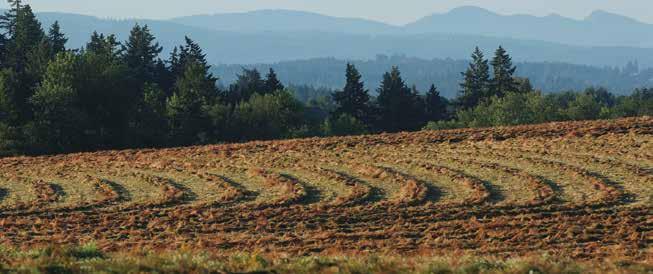
WINTER 2024 47
Commissions Update
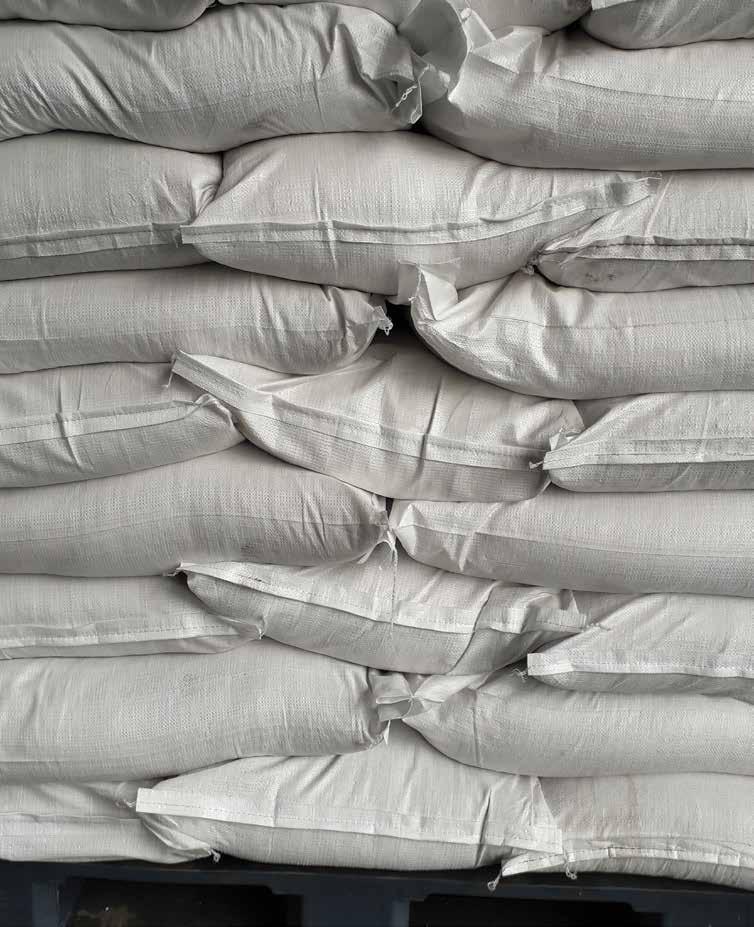
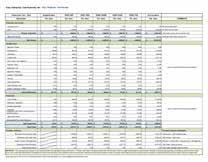

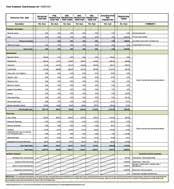
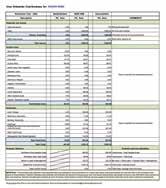

48 Oregon Seed ogsba.com OGSBA was formed by seed growers in 1994 to give growers an opportunity to negotiate fair prices with seed dealers. Cost of Production Budgets Available for FREE at: OGSBA.com For questions or to sign up for news briefs, contact: Mark Simmons • 503-551-3208 • marksimmons@ogsba.com By Growers - For Growers
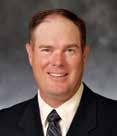
Research & Regulatory Report
Steve Salisbury, Oregon Seed Council Research & Regulatory Coordinator
As many of you are aware, on October 31 the Lorsban Advanced label was officially cancelled, which spelled the end of chlorpyrifos on grass grown for seed. I believe as an industry we were aware of the looming end to chlorpyrifos, so no real surprise there. Yet with Corteva cancelling the registration, this came a couple months before the Oregon chlorpyrifos law went into effect on January 1. In the end, still the same result.
What does this mean now that it has officially exited the building? What is happening with regards to replacing such a useful and cost-effective tool that has assisted grass seed production for decades? What can you do with any leftover inventory that may be left in your chemical shed? All good questions and we’ll try to briefly address them here.
First, the cancellation does spell the end of use on grass seed. As of the end of December, Oregon’s law does not allow the use on almost anything anymore. However, there are three exceptions to the rule. Those are labeled uses for: 1) Commercial pre-plant seed treatments; 2) When formulated as and used as a
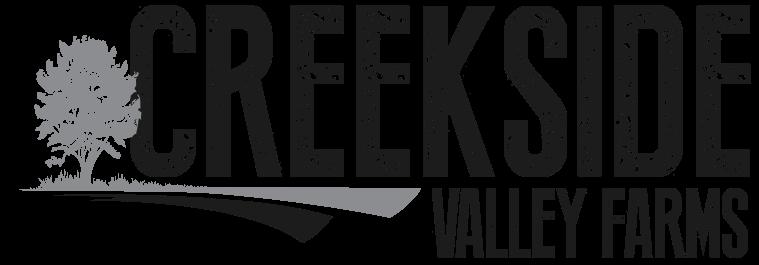
granular product; and 3) Impregnated cattle ear tags. Again, there are no more allowed uses for chlorpyrifos on grass seed.
Overall, it seems that the industry has done a responsible job of flushing out the inventories available in the pipelines ahead of the cancellation. This is good news in that those inventories were appropriately agronomically applied leaving very little for cleanup. Since it is cancelled, chlorpyrifos now has to be handled as hazardous waste and managed accordingly. If you happen to have a little left in your shed, you can contact the Oregon Department of Agriculture’s Pesticide Stewardship Partnership Program. They host a few disposal collection events throughout the state during the year. Go to their website https://oda.direct/PesticideStewardship for more information.
On to what may be considered the bigger question. Now what? Are there viable alternatives available for use in grass seed crops? As a whole, we have a few
(continued on page 50)
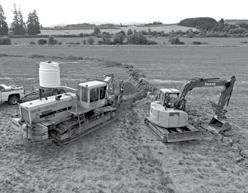







WINTER 2024 49 Installation, Consulting, Repairs & Maintenance. McDonald, Jefferson, Yamhill, Wepster, York, Eta, Theta & Felix. FARM DRAINAGE: HAZELNUT TREES: ADAM BAUMAN: 971-901-1665 • PAUL KUEHNE: 503- 437-4833 CALL TODAY FOR A QUOTE & AVAILABILITY Research & Regulatory Report
OSU Seed Services
(continued from page 49)
OSU Seed Services
Seed Lab
Research & Regulatory Report
Seed Certification | seedcert.oregonstate.edu
Seed Certification | seedcert.oregonstate.edu
n Accurate and Timely Results
• Maintain pedigree of improved varieties
• Maintain pedigree of improved varieties
• Local participation through Advisory Committees
• Local participation through Advisory Committees
n AOSA & SCST analyst accreditations; ISTA lab accreditation
n Innovating for a changing industry
• Provide OECD (international) seed certification
• Provide OECD (international) seed certification
Seed Certification
Seed Laboratory | seedlab.oregonstate.edu
Partnering with Oregon’s Seed Industry for over 100 Years
Partnering with Oregon’s Seed Industry for over 100 Years
new actives in the queue that are making progress in the pipeline. Additionally, there have been several research projects funded by the Oregon grass seed commissions, the Oregon Department of Agriculture and other various sources to investigate and evaluate candidate insecticides. The research to collect the performance data is a key piece in moving forward to possible registrations, and certainly the right place to invest resources. The other piece to get in place is the regulatory perspective. This is, of course, a bit more challenging and possibly even more so given the current debacle with the endangered species reviews and consultations, pending EPA strategies, pilot projects and registration reviews.
Let’s take a look at what we are currently looking at. The active that is probably the closest to “seeing the light of day” on a label for grass seed is indoxacarb. This material shows good performance and fit with grass seed insect pests. It has completed the field evaluations and analysis through the IR-4
OSU Seed Services
OSU Seed Services
Seed Laboratory | seedlab.oregonstate.edu
• Dedicated to serving customers
• Dedicated to serving customers
n 24 hour access through eCertification
n Responsive team of Certification experts
• Seed testing services for a broad range of needs
• Seed testing services for a broad range of needs
• Innovating for a changing industry
• Innovating for a changing industry
Project and is ready to be submitted for tolerance approval at the EPA. In fact, IR-4 with the registrant, FMC, already submitted the petition but the EPA would not accept it. Without getting too deep into the weeds, in short, we need to work through some details regarding the required public interest finding and weight of evidence justifying grass seed’s partnership with IR-4. We are working on it with IR-4 and are hopeful we can make progress to resolve the issues. In the meantime, indoxacarb is on hold for now. Yes, frustrating.
Another frustrating regulatory hurdle that is preventing progress on a couple more candidate insecticides is the federal registration review of all neonicotinoids. Yes, the neonics are still under review and the EPA is not allowing new uses or registrations through or to enter the queue until the review is completed. The candidates for grass seed in this category are thiamethoxam and sulfoxoflor. Both show promise and could provide systemic control, which is commonly requested by
Seed Lab
Seed Certification | seedcert.oregonstate.edu
Seed Certification | seedcert.oregonstate.edu
n Accurate and Timely Results
• Maintain pedigree of improved varieties
• Maintain pedigree of improved varieties
• Maintain
• Local
• Provide Seed
• Dedicated
• Seed
Seed Years Seed
• Innovating
Partnering with Oregon’s Seed Industry for over 100 Years
Partnering with Oregon’s Seed Industry for over 100 Years
• Local participation through Advisory Committees
• Local participation through Advisory Committees
n AOSA & SCST analyst accreditations; ISTA lab accreditation
n Innovating for a changing industry
• Provide OECD (international) seed certification
• Provide OECD (international) seed certification
Seed Certification
Seed Laboratory | seedlab.oregonstate.edu
Seed Laboratory | seedlab.oregonstate.edu
• Dedicated to serving customers
• Dedicated to serving customers
n 24 hour access through eCertification
n Responsive team of Certification experts
• Seed testing services for a broad range of needs
• Seed testing services for a broad range of needs
• Maintain
• Local
• Provide Seed
• Dedicated
• Seed
n Provide OECD (International) Seed Certification Seed Years Seed
• Innovating for a changing industry
• Innovating for a changing industry
n Provide OECD (International) Seed Certification

• Innovating
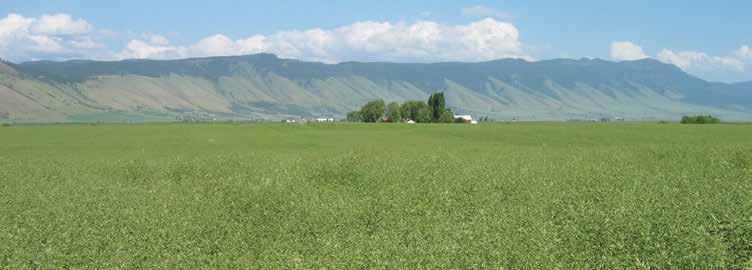
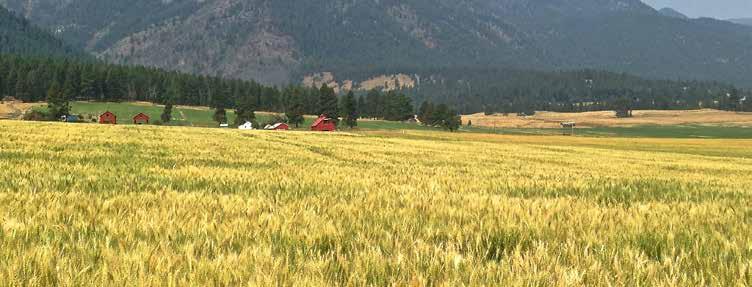
50 Oregon Seed
growers looking for improved insect control. OSU’s entomology research has and continues to evaluate these treatments and demonstrate that both materials perform very well on our pest and there is a good fit in the grass seed system. Furthermore, registrant support is there for grass seed. Essentially, we are waiting for EPA to provide a clear path forward to registration and labels. Sorry, but there is no clear timeline on when that door may open for us. The last update from EPA indicated an interim decision on neonics in 2024, but these timelines are ever changing and more so with the endangered species reviews consuming significant amounts of resources and time at the agency.
On the horizon, in other words several years out, there are some more promising candidates. Broflanilide and plinazolin are in the early developmental stages and research is underway. Both are new modes of action, which of course benefits our IPM strategies to prevent resistance development. Of course, we are still several years
away before we will see these on labels. We will continue to push through the processes of research and development and the regulatory worlds in hopes of obtaining a new label for grass seed.
It’s safe to say that yes, we have new candidate insecticides in process to fill the void left from the chlorpyrifos loss. That loss is a big one and we are left with only a few options at this time. Even though the process is going to be slower than we’d like, we will continue to push through it to find and obtain new options. In the meantime, we will continue to find ways to support the needed research, partner with registrants and IR-4 and work with the regulatory agencies the best we can. As for in the field, we do have good products available for use. I would encourage you to work with your industry professionals to choose the right options and implement insecticide rotations to prevent any resistance development. F

WINTER 2024 51 Research & Regulatory Report
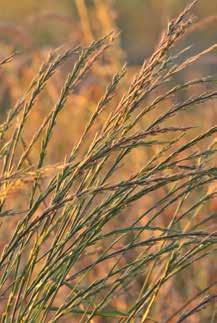

Ag Drainage Corp. .......................... 43 AgWest Farm Credit ......................... 5 American Ag Systems 27 AMVAC 2 Axill Solutions 15 Barenbrug USA ............................... BC Citizens Bank ................................... 42 Corteva Agriscience 21 Creekside Valley Farms 49 GrassWorks Manufacturing 29 Ground and Water ......................... 19 Harvest Capital Company .............. 51 Hilton Trenching ............................. 30 Integrated Seed Growers LLC 44 Liphatech, Inc. 17 Marion Ag Service ........................... 37 Neudorff .......................................... 13 Nutrien Ag Solutions, Inc. 33 ORCAL, Inc. IBC OR/PAC Feed & Forage 22 Oregon Grass Seed Bargaining Association 48 Oregon Seed Association 11 OSU Seed Services .......................... 50 Pratum Co-op ................................. 8-9 Sprague Pest Solutions 20 Valley Agronomics LLC 31 West Coast Companies 26 Wilbur-Ellis ................................ IFC, 38 CLASSIFIED ADS IN OREGON SEED BRING RESULTS! Rates are $25 per 50 word insertion and 50¢ per additional word. Deadline for the Spring issue is March 22, 2024. Contact Shawn Anderson at (503) 364-3346, shawn@ostlund.com. Classifieds Calendar PLANT THE SEED AND WATCH IT GROW ADVERTISE WITH OREGON SEED For more information contact Shawn Anderson at 503-364-3346 or shawn@ostlund.com February 12 Oregon Fine Fescue Commission Meeting, 7 a.m., Roth’s, 1130 Wallace Rd NW, Salem February 19 Oregon Ryegrass Commission Meeting, 6 p.m., Cascade Grill, 110 Opal St N.E., Albany February 22 Oregon Tall Fescue Commission Meeting, 6 p.m., Cascade Grill, 110 Opal St N.E., Albany February 27 Oregon Seed Council Meeting, 6:30 p.m., Cascade Grill, 110 Opal St N.E., Albany March 20 Oregon Clover Commission Meeting, 7 a.m., Roth’s, 1130 Wallace Rd NW, Salem March 26 Oregon Seed Council Meeting, 6:30 p.m., Cascade Grill, 110 Opal St N.E., Albany April 1 Oregon Fine Fescue Commission Meeting, 7 a.m., Roth’s, 1130 Wallace Rd NW, Salem April 4 Oregon Tall Fescue Commission Meeting, 6 p.m., Roth’s, 1130 Wallace Rd NW, Salem April 8 Oregon Ryegrass Commission Meeting, 6 p.m., Cascade Grill, 110 Opal St N.E., Albany April 23 Oregon Seed Council Meeting, 6:30 p.m., Cascade Grill, 110 Opal St N.E., Albany May 28 Oregon Seed Council Meeting, 6:30 p.m., Cascade Grill, 110 Opal St N.E., Albany June 25 Oregon Seed Council Meeting, 6:30 p.m., Cascade Grill, 110 Opal St N.E., Albany Advertiser List

Follow all directions, restrictions, and


DUO is a unique proprietary blend of 2 different active ingredients. 50% Slugger 4.0 (Metaldehyde) and 50% BioSul (Sulfur).
DUO is a premium rain fast pellet.
DUO has a wheat based attractant package.
In replicated trials, both Slugger 4.0 and BioSul killed 50% of slugs by day 2, and over 90% were dead by day 5.
OR-CAL,
Junction
INC 29454 Meadowview Rd
City, OR 97448 Roger Hafner Cell: 541-974-1712 Roger@O inc.com
• • • •
Standard,
precautions ON THE LABEL A Great Alternative to
Single Active Ingredient Baits IN GRASSES AND WHEAT

Plant a Legacy.
When you partner with Barenbrug USA, you can be assured that from our investments in research and development to our commitment to marketing and market education, you are planting more than just seed - you are planting a legacy. We believe in long-term relationships that bring stability to growers and value to our customers. Our team works to provide expertise, high seed yield, rotational crops, new and innovative varieties and exceptional value. From first planting to harvest to finished product you can be confident that your legacy is in good hands. Come grow with us.
Liz
Cathy

Mark
54 Oregon Seed
Sawyer Director of Production 509-934-6569
Schlupe Production Manager-Eastern Region 541-571-0575
Helmig Spijkerboer EVP 541-207-4546
Beitel Field Representative 541-619-9971
Josh Brawley Field Representative 541-936-2552












































 Jing Zhou
Jing Zhou





























































 Caio Brunharo, Ph.D.
Caio Brunharo, Ph.D.



 Tom Chastain
Tom Chastain














































